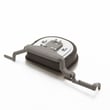Kenmore Elite 79572043313 bottom-mount refrigerator manual
Are you looking for information on using the Kenmore Elite 79572043313 bottom-mount refrigerator? This user manual contains important warranty, safety, and product feature information. View the user manual below for more details. Want a copy for yourself? Download or print a free copy of the user manual below.
Use & Care Guide
Manual de Uso y Cuidado
Guide d’Utilisation et d’Entretien
English / Español / French
Models/Modelos/Modèles: 795.7205*, 7204*
Kenmore Elite®
Bottom Freezer Refrigerator
Congélateur Inférieur Réfrigérateur
*= color number, número de color, le numéro de la couleur
P/N MFL62184417
Sears Brands Management Corporation
Hoffman Estates, IL 60179 U.S.A.
Sears Canada Inc.
Toronto, Ontario, Canada M5B 2C3

TABLE OF CONTENTS
- Warranty
- Protection Agreements
- Important Safety Instructions
- Electrical & Grounding Requirements
- Parts and Features
- Refrigerator Installation
- Using Your Refrigerator
- ►Refrigerator Section
- ►Freezer Section
- Water Filter
- Care And Cleaning
- Connecting the Water Line
- Troubleshooting Guide
- Kenmore Connect
- Service
WARRANTY
REFRIGERATOR WARRANTY

Kenmore Elite Limited Warranty
When this appliance is installed, operated and maintained according to all supplied instructions, the following warranty coverage applies. To arrange for warranty service, call 1-800-4-MY-HOME® (1-800-469-4663).
For one year from the date of purchase, free repair will be provided if any non-consumable part of this appliance fails due to defective materials or workmanship. This coverage applies for only 90 days from the purchase date if this product is ever used for other than private household purposes.
For five years from the date of purchase, a defective sealed refrigerant system will be repaired free of charge. This coverage applies for only one year from the date of purchase if this appliance is ever used for other than private household purposes.
For ten years from the date of purchase, a defective compressor will be repaired free of charge. This coverage applies for only two years from the date of purchase if this appliance is ever used for other than private household purposes.
This warranty covers only defects in material and workmanship, and will NOT pay for:
- Consumable parts that can wear out from normal use, including but not limited to filters, belts, light bulbs, and bags.
- A service technician to instruct the user in correct product installation, operation or maintenance.
- A service technician to clean or maintain this product.
- Damage to or failure of this product if it is not installed, operated or maintained according to the all instructions supplied with the product.
- Damage to or failure of this product resulting from accident, abuse, misuse or use for other than its intended purpose.
- Damage to or failure of this product caused by the use of detergents, cleaners, chemicals or utensils other than those recommended in all instructions supplied with the product.
- Damage to or failure of parts or systems resulting from unauthorized modifications made to this product.
Disclaimer of implied warranties; limitation of remedies
Customer’s sole and exclusive remedy under this limited warranty shall be product repair as provided herein. Implied warranties, including warranties of merchantability or fitness for a particular purpose, are limited to one year or the shortest period allowed by law. Sears shall not be liable for incidental or consequential damages. Some states and provinces do not allow the exclusion or limitation of incidental or consequential damages, or limitation on the duration of implied warranties of merchantability or fitness, so these exclusions or limitations may not apply to you.
This warranty applies only while this appliance is used in the United States or Canada.
This warranty gives you specific legal rights, and you may also have other rights which vary from state to state.
Sears Brands Management Corporation, Hoffman Estates, IL 60179 Sears Canada Inc., Toronto, Ontario, Canada M5B 2C3
PROTECTION AGREEMENTS
Master Protection Agreements
Congratulations on making a smart purchase. Your new Kenmore Elite® product is designed and manufactured for years of dependable operation. But like all products, it may require preventive maintenance or repair from time to time. That’s when having a Master Protection Agreement can save you money and aggravation.
The Master Protection Agreement also helps extend the life of your new product. Here’s what the Agreement* includes:
Parts and labor needed to help keep products operating properly under normal use, not just defects. Our coverage goes well beyond the product warranty. No deductibles, no functional failure excluded from coverage— real protection.
Expert service by a force of more than 10,000 authorized Sears service technicians, which means someone you can trust will be working on your product.
Unlimited service calls and nationwide service, as often as you want us, whenever you want us.
“No-lemon” guarantee – replacement of your covered product if four or more product failures occur within twelve months.
Product replacement if your covered product can’t be fixed.
Annual Preventive Maintenance Check at your request – no extra charge.
Fast help by phone – we call it Rapid Resolution – phone support from a Sears representative on all products. Think of us as a “talking owner’s manual.”
Power surge protection against electrical damage due to power fluctuations.
$250 Food Loss Protection annually for any food spoilage that is the result of mechanical failure of any covered refrigerator or freezer.
Rental reimbursement if repair of your covered product takes longer than promised.
10% discount off the regular price of any non-covered repair service and related installed parts.
Once you purchase the Agreement, a simple phone call is all that it takes to schedule service. You can call at any time day or night, or schedule a service appointment online.
The Master Protection Agreement is a risk free purchase. If you cancel for any reason during the product warranty period, we will provide a full refund or a prorated refund anytime after the product warranty period expires. Purchase your Master Protection Agreement today!
Some limitations and exclusions apply.
For prices and additional information in the U.S.A. call 1-800-827-6655.
*Coverage in Canada varies on some items. For full details call Sears Canada at 1-800-361-6665.
Sears Installation Service
For Sears professional installation of home appliances, garage door openers, water heaters, and other major home items, in the U.S.A. or Canada call 1-800-4-MY-HOME®.
PRODUCT RECORD
In the space below, record the date of purchase, model and serial number of your product. You will find the model and serial number printed on an identification label located on the interior liner of the refrigerator compartment. Have these items of information available whenever you contact Sears concerning your product.
| Model No._________ | Date of Purchase_________ |
|---|---|
| Serial No.____________ |
Save these instructions and attach your sales receipt for future reference.
IMPORTANT SAFETY INSTRUCTIONS
BASIC SAFETY PRECAUTIONS
This guide contains many important safety messages. Always read and obey all safety messages.
 |
This is the safety alert symbol. It alerts you to safety messages that inform you of hazards that can kill or hurt you or others, or cause damage to the product. |
|---|---|
| All safety messages will be preceded by the safety alert symbol and the hazard signal word DANGER, WARNING or CAUTION. These words mean: | |
 |
You will be killed or seriously injured if you do not follow instructions. |
 |
You can be killed or seriously injured if you do not follow instructions. |
 |
Indicates an imminently hazardous situation which, if not avoided, may result in minor or moderate injury, or product damage. |
All safety messages will identify the hazard, tell you how to reduce the chance of injury, and tell you what can happen if the instructions are not followed.
 WARNING
WARNING
To reduce the risk of fire, electric shock, or personal injury when using your product, basic safety precautions should be followed, including the following.
Read all instructions before using this appliance.
NEVER unplug your refrigerator by pulling on the power cord. Always grip the plug firmly and pull it straight out from the outlet.
Immediately repair or replace all power cords that have become frayed or otherwise damaged. Do not use a cord that shows cracks or abrasion damage along its length or at either the plug or connector end.
Do not modify or extend the power cord length. It could cause electric shock or fire.
When moving your refrigerator away from the wall, be careful not to roll over or damage the power cord.
DO NOT store or use gasoline or other flammable vapors and liquids in the vicinity of this or any other appliance.
DO NOT allow children to climb, stand, or hang on the refrigerator doors or shelves in the refrigerator. They could damage the refrigerator and seriously injure themselves.
Keep fingers out of pinch point areas; clearances between the doors and cabinets are necessarily small. Be careful closing doors when children are in the area.
Unplug your refrigerator before cleaning or making any repairs.
NOTE: It is strongly recommended that any service be performed by a qualified technician.
SAVE THESE INSTRUCTIONS
 WARNING
WARNING
Before replacing a burned-out or broken light bulb, unplug the refrigerator or turn off power at the circuit breaker or fuse box in order to avoid contact with a live wire filament. (A burned-out light bulb may break when being replaced exposing the wire filament.)
NOTE: Some models have LED interior lighting and service should be performed by a qualified technician.
WARNING: Setting either or both controls to the OFF position does not remove power to the light circuit.
When you are finished, reconnect the refrigerator to the electrical source and reset the controls (Thermostat, Refrigerator Control, and or Freezer Control, depending on the model) to the desired setting.
This refrigerator must be properly installed in accordance with the Attention Installer Instructions that were taped to the front of the refrigerator.
After your refrigerator is in operation, do not touch the cold surfaces in the freezer compartment when hands are damp or wet. Skin may adhere to the extremely cold surfaces.
DO NOT touch the automatic ice making mechanism while the refrigerator is plugged in.
DO NOT refreeze frozen foods which have thawed completely. The United States Department of Agriculture in Home and Garden Bulletin No. 69 says:
…You may safely refreeze frozen foods that have thawed if they still contain ice crystals or if they are still cold—below 39°F (4°C).
…Thawed ground meats, poultry or fish that have any off-odor or off-color should not be refrozen and should not be eaten. Thawed ice cream should be discarded. If the odor or color of any food is poor or questionable, dispose of it. The food may be dangerous to eat.
Even partial thawing and refreezing reduces the eating quality of foods, particularly fruits, vegetables and prepared foods. The eating quality of red meats is affected less than that of many other foods. Use refrozen foods as soon as possible to save as much of their quality as you can.
SAVE THESE INSTRUCTIONS
 DANGER: RISK OF CHILD ENTRAPMENT
DANGER: RISK OF CHILD ENTRAPMENT
Junked or abandoned refrigerators are dangerous, even if they are sitting for only a few days. If you are getting rid of your old refrigerator, please follow the instructions at right to help prevent accidents (child entrapment and suffocation).

BEFORE YOU THROW AWAY YOUR OLD REFRIGERATOR OR FREEZER:
Take off the doors.
Leave the shelves in place so that children may not easily climb inside.
CFC/HCFC DISPOSAL
Your old refrigerator may have a cooling system that used CFCs or HCFCs (chlorofluorocarbons or hydrochlorofluorocarbons). CFCs and HCFCs are believed to harm stratospheric ozone if released to the atmosphere. Other refrigerants may also cause harm to the environment if released to the atmosphere.
If you are throwing away your old refrigerator, make sure the refrigerant is removed for proper disposal by a qualified technician. If you intentionally release refrigerant, you may be subject to fines and imprisonment under provisions of environmental legislation.
ELECTRICAL & GROUNDING REQUIREMENTS
IMPORTANT: Please read carefully.
TO CONNECT ELECTRICITY
 WARNING
WARNING
Electrical Shock Hazard
FOR PERSONAL SAFETY, this appliance must be properly grounded. Have the wall outlet and the circuit checked by a qualified electrician to make sure the outlet is properly grounded.
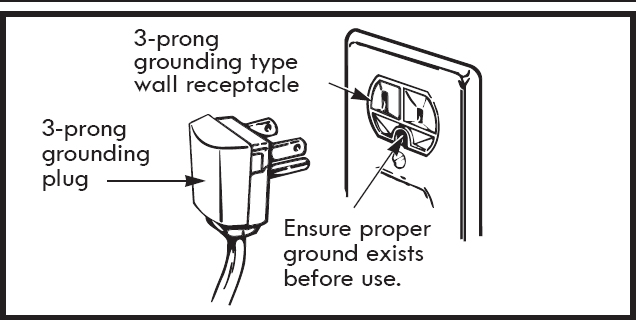
RECOMMENDED GROUNDING METHOD
The refrigerator should always be plugged into its own individual properly grounded electrical outlet rated for 115 Volts, 60 Hz, AC only, and fused at 15 or 20 amperes. This provides the best performance and also prevents overloading house wiring circuits which could cause a fire hazard from overheated wires. It is recommended that a separate circuit serving only this appliance be provided.
Use a receptacle that cannot be turned off with a switch or pull chain. Do not use an extension cord.
Where a standard two-prong wall outlet is encountered, it is your personal responsibility and obligation to have it replaced with a properly grounded three-prong wall outlet.
USE OF EXTENSION CORDS
Because of potential safety hazards under certain conditions, the use of an extension cord is not recommended. However, if you still elect to use an extension cord, it is absolutely necessary that it be a UL-listed (USA), 3-wire grounding type appliance extension cord having a grounding type plug and outlet, and that the electrical rating of the cord be 15 amperes (minimum) and 120 volts.
Use of an extension cord will increase the clearance needed for the back of the refrigerator.
PARTS AND FEATURES
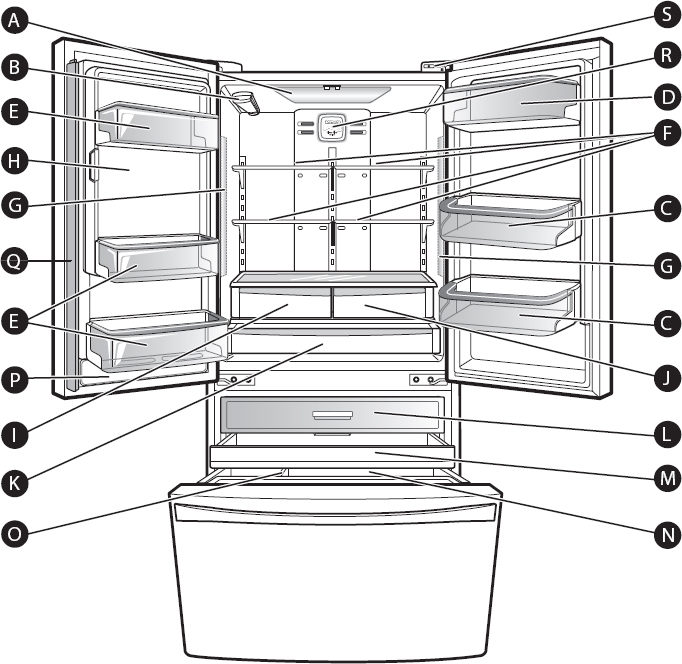
Use this page to become more familiar with the parts and features of your refrigerator.
NOTE: This guide covers several different models. The refrigerator you have purchased may have some or all of the items listed below. The locations of the features shown below may not match your model.
| A | Refrigerator Light |
|---|---|
| B | Water Filter |
| C | Adjustable Door Bins |
| D | Adjustable Dairy Bin |
| E | Fixed Door Bins |
| F | Refrigerator Shelves |
| G | Refrigerator Light (side) |
| H | Ice Compartment (Icemaker and Ice Bin) |
| I | Humidity Controlled Crisper |
| J | Air Tight Crisper |
| K | Temperature Controlled Pantry Drawer |
| L | Top Pullout Drawer |
| M | Middle Pullout Drawer |
| N | Durabase |
| O | Durabase Divider |
| P | Water Tank Cover |
| Q | Articulating Mullion |
| R | Air Filter |
| S | Kenmore Connect Speaker |
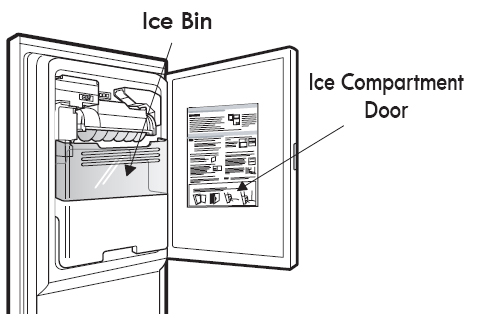
REFRIGERATOR INSTALLATION
 WARNING
WARNING
Excessive Weight Hazard:
Use two or more people to move and install the refrigerator. Failure to do so can result in back or other injury.
UNPACKING YOUR REFRIGERATOR
Remove tape and any temporary labels from your refrigerator before using. Do not remove any warning-type labels, the model and serial number label, or the Tech Sheet that is located under the front of the refrigerator.
To remove any remaining tape or glue, rub the area briskly with your thumb. Tape or glue residue can also be easily removed by rubbing a small amount of liquid dish soap over the adhesive with your fingers. Wipe with warm water and dry.
Do not use sharp instruments, rubbing alcohol, flammable fluids, or abrasive cleaners to remove tape or glue. These products can damage the surface of your refrigerator.
Refrigerator shelves are installed in the shipping position. Please reinstall shelves according to your individual storage needs.
 WARNING
WARNING
Excessive Weight Hazard:
Your refrigerator is heavy. When moving the refrigerator for cleaning or service, be sure to protect the floor. Always pull the refrigerator straight out when moving it. Do not wiggle or walk the refrigerator when trying to move it, as floor damage could occur.
 WARNING
WARNING
Explosion Hazard:
Keep flammable materials and vapors, such as gasoline, away from the refrigerator. Failure to do so can result in fire, explosion, or death.
PRIOR TO USE
Clean your refrigerator thoroughly and wipe off all dust that accumulated during shipping.
Install accessories such as ice cube bin, drawers, shelves, etc., in their proper places. They are packed together to prevent possible damage during shipment.
Allow your refrigerator to run for at least two to three hours before putting food in it. Check the flow of cold air in the freezer compartment to ensure proper cooling. Your refrigerator is now ready for use.
INSTALLATION
The refrigerator should always be plugged into its own individual properly grounded electrical outlet rated for 115 Volts, 60 Hz, AC only, and fused at 15 or 20 amperes. This provides the best performance and also prevents overloading house wiring circuits which could cause a fire hazard from overheated wires. It is recommended that a separate circuit serving only this appliance be provided.
WARNING
Shock Hazard:
To reduce the risk of electric shock, do not install the refrigerator in a wet or damp area.
INSTALLATION (continued)
To avoid noise and vibration, the unit must be leveled and installed on a solidly constructed floor. If required, adjust the leveling legs to compensate for unevenness of the floor. The front should be slightly higher than the rear to aid in door closing. Leveling legs can be turned easily by tipping the cabinet slightly. Turn the leveling legs to the left to raise the unit or to the right to lower it. (See LEVELING AND DOOR ALIGNMENT.)
NOTE: Installing on carpeting, soft tile surfaces, a platform or weakly supported structure is not recommended.
Install this appliance in an area where the temperature is between 55°F (13°C) and 110°F (43°C). If the temperature around the appliance is too low or high, cooling ability may be adversely affected.
Select a place where a water supply can be easily connected for the automatic icemaker.
NOTE: The water pressure must be between 20 and 120 psi on models without a water filter and between 40 and 120 psi on models with a water filter.
Too small of a distance from adjacent items may result in lowered freezing capability and increased electricity consumption charges. Allow at least 24 inches (61 cm) in front of the refrigerator to open the doors and at least 2 inches (5.08 cm) between the back of the refrigerator and the wall.
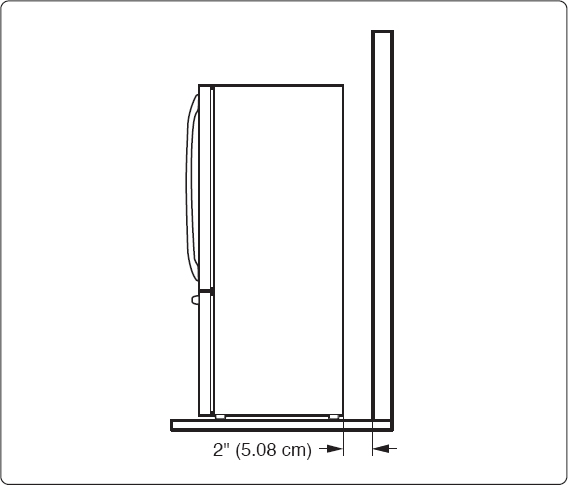
NOTE: Removing the doors is always recommended when it is necessary to move the refrigerator through a narrow opening. If it is necessary to remove the handles, follow the directions below.
HOW TO REMOVE REFRIGERATOR DOOR HANDLE
NOTE: Handle appearance may vary from illustrations on this page.
Removing Refrigerator Handle
Loosen the set screws with a
in. Allen wrench and remove the handle.
NOTE: If the handle mounting fasteners need to be tightened or removed, use a ¼ in. Allen wrench.
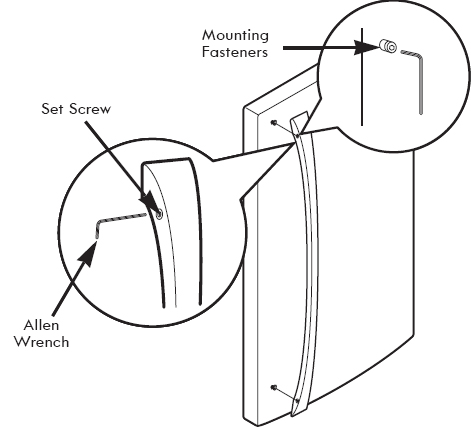
HOW TO REPLACE REFRIGERATOR DOOR HANDLE
NOTE: Handle appearance may vary from illustrations on this page.
Replacing Refrigerator Door Handle
Place the handle on the door by fitting the handle footprints over the mounting fasteners and tightening the set screws with a
in Allen wrench.
NOTE: If the handle mounting fasteners need to be tightened or removed, use a ¼ in. Allen wrench.
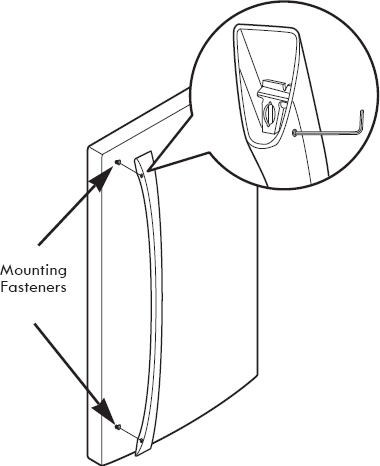
NOTE: Removing the doors is always recommended when it is necessary to move the refrigerator through a narrow opening. If it is necessary to remove the handles, follow the directions below.
HOW TO REMOVE FREEZER DOOR HANDLE
NOTE: Handle appearance may vary from illustrations on this page.
Removing Freezer Drawer Handle
Loosen the set screws located on the lower side of the handle with a ⅛ in. Allen wrench and remove the handle.
NOTE: If the handle mounting fasteners need to be tightened or removed, use a ¼ in. Allen wrench.
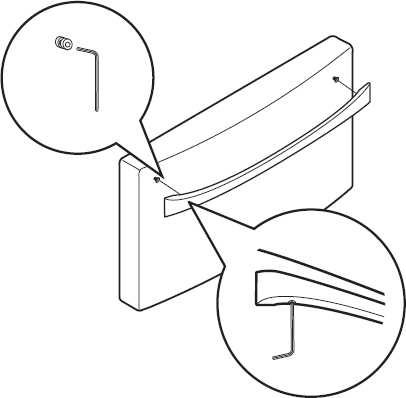
HOW TO REPLACE FREEZER DOOR HANDLE
NOTE: Handle appearance may vary from illustrations on this page.
Replacing Freezer Drawer Handle
Place the handle on the door by fitting the handle footprints over the mounting fasteners and tightening the set screws with a ⅛ in. Allen wrench.
NOTE: If the handle mounting fasteners need to be tightened or removed, use a ¼ in. Allen wrench.
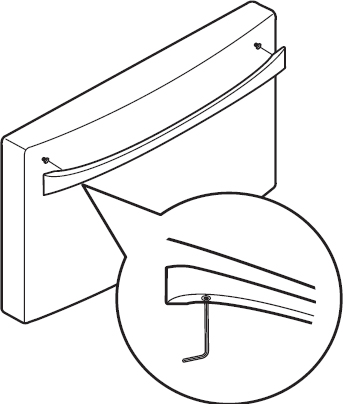
REMOVING AND REPLACING REFRIGERATOR DOORS
 WARNING
WARNING
Excessive Weight Hazard:
Use two or more people to remove and install the refrigerator doors. Failure to do so can result in back or other injury.
 WARNING
WARNING
Electrical Shock Hazard
Disconnect the electrical supply to the refrigerator before installing. Failure to do so could result in serious injury or death.
Do not put hands, feet or other objects into the air vents or bottom of the refrigerator. You may be injured or receive an electrical shock.
To remove the left refrigerator door:
On the back of the refrigerator, pull the water tube out of the collet fitting on the connector by pressing the fitting release ring (see picture below).
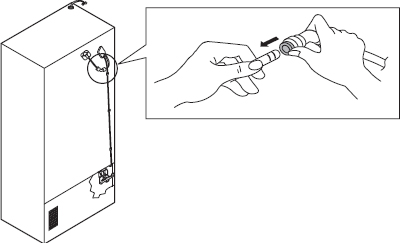
 CAUTION: Before you begin, remove food and bins from the doors.
CAUTION: Before you begin, remove food and bins from the doors.
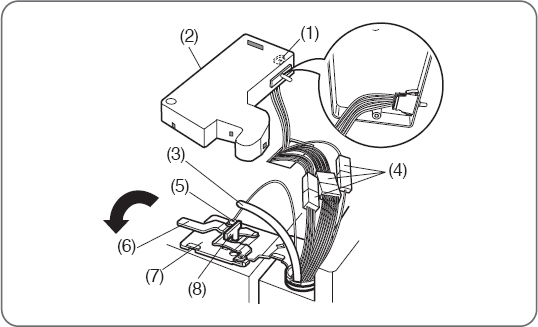
Open the door. Remove the top hinge cover screw (1). Lift up the cover (2).
Remove the cover.
Pull out the tube (3).
Disconnect all wire harnesses (4).
Remove the grounding screw (5).
Rotate hinge lever (6) counterclockwise. Lift the top hinge (7) free of the hinge lever latch (8).
 CAUTION: When lifting the hinge free of the latch, be careful that the door does not fall forward.
CAUTION: When lifting the hinge free of the latch, be careful that the door does not fall forward.
Lift the door from the middle hinge pin and remove the door.
Place the door, inside facing up, on a non-scratching surface.
To remove the right refrigerator door:
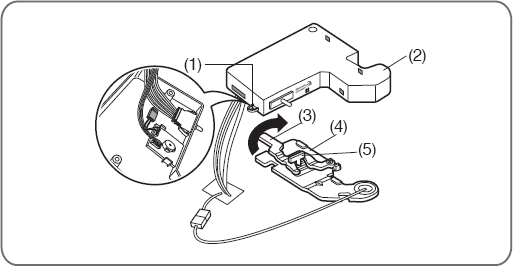
Open the door. Remove the top hinge cover screw (1). Lift up the cover (2).
Remove the cover.
Rotate the hinge lever (3) clockwise. Lift the top hinge (4) free of the hinge lever latch (5).
 CAUTION: When lifting the hinge free of the latch, be careful that the door does not fall forward.
CAUTION: When lifting the hinge free of the latch, be careful that the door does not fall forward.
Lift the door from the middle hinge pin and remove the door.
Place the door, inside facing up, on a non-scratching surface.
Reinstalling the Refrigerator Door
▶ Left Door
Lower the door onto middle hinge pin (10).
Fit top hinge (7) over hinge lever latch (8) and into place. Rotate lever (6) clockwise to secure hinge.
Install the grounding screw (5) and connect the two wire harnesses (4).
Push the water tube (3) located at the top of the left door into the hole beside the left hinge on the top of the cabinet until it exits through the back.
Insert the water supply tube (3) into the connector until you see only one scale mark. Fully insert the tube over ⅝ in. (15 mm).
Hook tabs on left side of hinge cover (1) under the edge of the top hinge (7) and position the cover in place. Insert and tighten the cover screw (1).
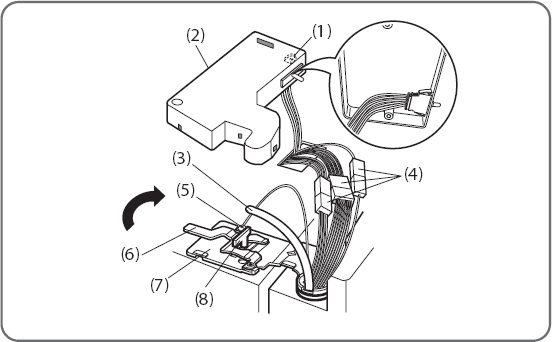
▶ Right Door
Lower the door onto middle hinge pin (9).
Fit top hinge (4) over hinge lever latch (5) and into place. Rotate lever (3) counterclockwise to secure hinge.
Hook the tabs on right side of hinge cover (2) under the edge of the top hinge (4) and position the cover in place. Insert and tighten the cover screw (1).
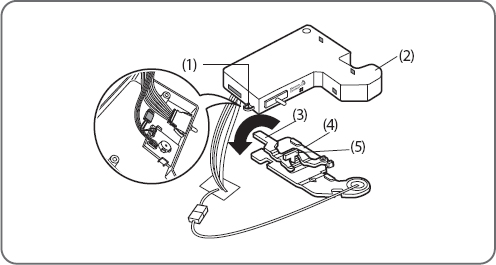
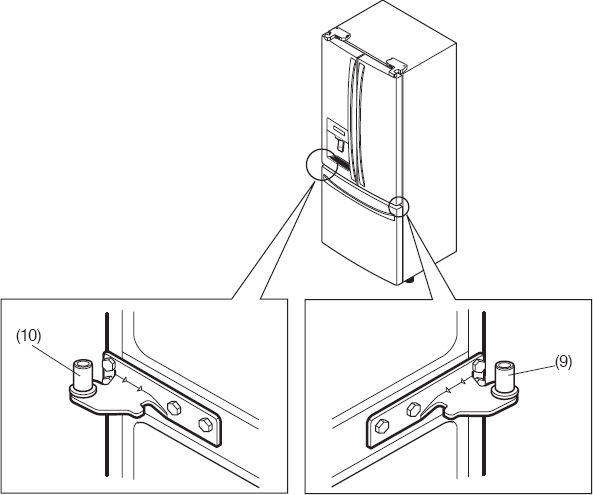
 CAUTION
CAUTION

HOW TO REMOVE THE FREEZER DRAWER
 WARNING: Use two or more people to remove and install the freezer drawer. Failure to do so can result in back or other injury.
WARNING: Use two or more people to remove and install the freezer drawer. Failure to do so can result in back or other injury.
 CAUTION: Do not hold the handle when removing or replacing the drawer. The handle may come off and it could cause personal injury.
CAUTION: Do not hold the handle when removing or replacing the drawer. The handle may come off and it could cause personal injury.
NOTE: In the following figures, the Pullout Drawer located above the freezer drawer is not shown for clarity.
Pull the drawer open to full extension. Remove the lower basket ➀ by lifting the basket from the rail system.
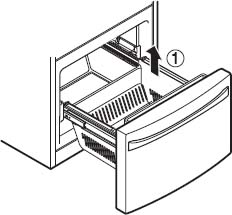
Remove the screws ➁ of the rail on both sides.
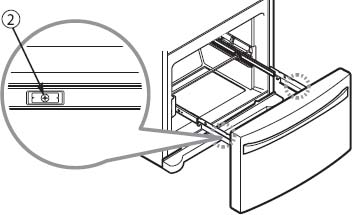
Grasp the drawer on each side and pull it up to separate it from the rails.
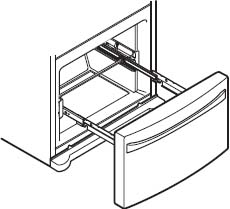
With both hands, slide each bar out simultaneously.
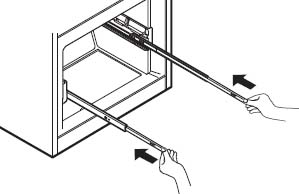
HOW TO INSTALL THE FREEZER DRAWER
Pull out each rail to full extension.
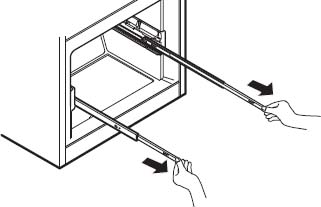
Grasp the drawer on each side and hook drawer supports ➀ into rail tabs ➁ located on both sides.
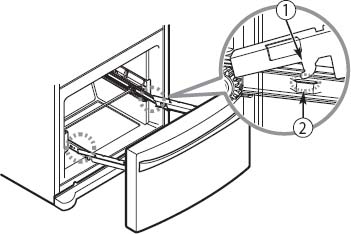
Lower the door into final position and tighten the screws ➂ located on both sides.
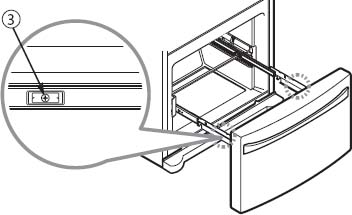
With the drawer pulled out to full extension, insert the lower basket ➃ in the rail assembly.
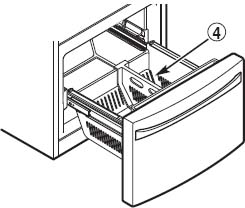
 WARNING: If the Durabase divider is removed, there is enough open space for children or pets to crawl inside. To prevent accidental child and pet entrapment or suffocation risk, DO NOT allow them to touch or go near the freezer drawer.
WARNING: If the Durabase divider is removed, there is enough open space for children or pets to crawl inside. To prevent accidental child and pet entrapment or suffocation risk, DO NOT allow them to touch or go near the freezer drawer.
 WARNING: DO NOT step or sit down on freezer drawer.
WARNING: DO NOT step or sit down on freezer drawer.
LEVELING AND DOOR ALIGNMENT
Leveling
After installing, plug the refrigerator’s power cord into a 3-prong grounded outlet and push the refrigerator into the final position.
Your refrigerator has two front leveling legs—one on the right and one on the left. Adjust the legs to alter the tilt from front-to-back or side-to-side. If your refrigerator seems unsteady, or you want the doors to close more easily, adjust the refrigerator’s tilt using the instructions below:
NOTE: Tools Required: 11/16” wrench or flat blade screwdriver.
- Turn the leveling leg to the left to raise that side of the refrigerator or to the right to lower it. It may take several turns of the leveling leg to adjust the tilt of the refrigerator.
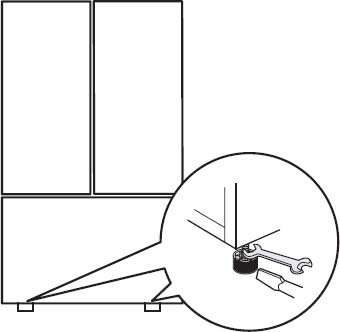
NOTE: Having someone push backward against the top of the refrigerator takes some weight off of the leveling legs. This makes it easier to adjust the legs.
Open both doors again and check to make sure that they close easily. If the doors do not close easily, tilt the refrigerator slightly more to the rear by turning both leveling legs to the left. It may take several more turns, and you should turn both leveling legs the same amount.
NOTE: Your refrigerator is uniquely designed with two fresh food doors. Either door can be opened or closed independently of the other. You may have to exert slight pressure on the doors to get them to close completely.
Door Alignment
Both the left and right refrigerator doors have an adjustable nut, located on the bottom hinge, to raise and lower them to align properly.
If the space between your doors is uneven, follow the instructions below to align the doors evenly:
Use the wrench (included with the Use & Care Guide) to turn the nut in the door hinge to adjust the height. To the right to raise or to the left to lower the height.
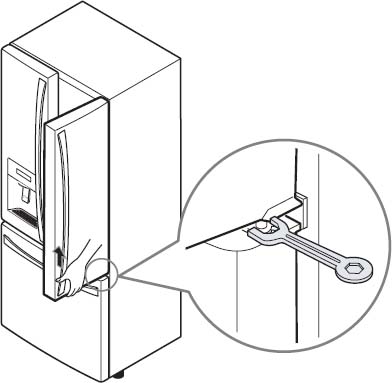
USING YOUR REFRIGERATOR
SETTING THE CONTROLS
AIRFLOW
Be sure not to block vents while packing your refrigerator. Doing so will restrict airflow and may cause the refrigerator temperature to become too warm or cause interior moisture buildup. (See air flow diagram below.)
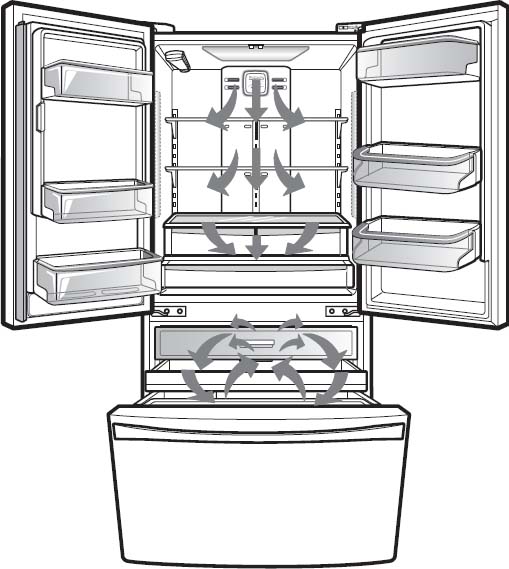
Temperature
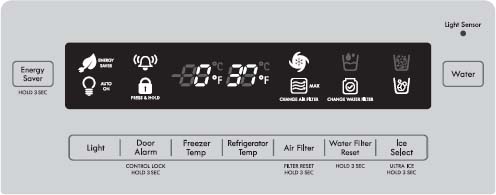
The Refrigerator Temp Control ranges from 33°F to 46°F (0°C to 8°C). Press the Refrigerator Temp button to cycle through the available temperature settings one increment at a time.
The Freezer Temp Control range is from -6°F to 8°F (-21°C to -13°C). Press the Freezer Temp button to cycle through the available temperature settings one increment at a time.
NOTE: When changing control settings, wait 24 hours before making additional adjustments. The controls are set correctly when milk or juice is as cold as you would like and when ice cream is firm. If the temperature in either compartment is too cold or too warm, change the setting one increment at a time. Wait 24 hours for the change to stabilize before adjusting again.
Dispenser
When you press the Water button, the Water icon will illuminate.
When you press the Ice Select button, either the cube or crushed ice icon will illuminate.
Some dripping may occur after dispensing. Hold your cup beneath the dispenser for a few seconds after dispensing to catch all of the drops.
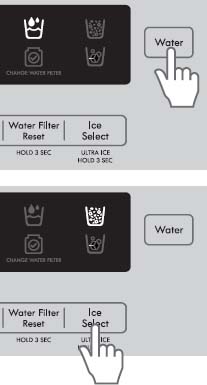
NOTE: The dispenser will not work if any door is left open or if the control lock is engaged.
 CAUTION: The control display is operated by touch. Excessive moisture on the display may cause a malfunction. Please keep the display clean and dry.
CAUTION: The control display is operated by touch. Excessive moisture on the display may cause a malfunction. Please keep the display clean and dry.
Air Filter 
The Air Filter helps remove odors from the refrigerator. The Air Filter has two settings, Auto and MAX. In Auto mode, the Air Filter will cycle on and off in increments of ten minutes on and one hundred and ten minutes off. If set to the MAX mode, the Air Filter will stay on continuously for four hours, cycling on and off in increments of ten minutes on and five minutes off. After four hours, the Air Filter will switch to Auto mode.
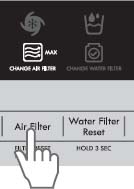
Auto mode is the default mode.

Press the Air Filter button once for MAX mode

Air Filter Reset 
When the CHANGE AIR FILTER icon turns on, the air filter needs to be replaced. After replacing the air filter, press and hold the Air Filter button for three seconds to turn the icon light off. It is recommended to change the air filter approximately every 6 months.
Ultra Ice 
When you press and hold the Ice Select button, the Ultra Ice graphic will illuminate in the display and will continue for 24 hours. The function will automatically shut off after 24 hours.
You can stop this function manually by touching the button one more time.
This function increases both ice making and freezing capabilities.
Water Filter Reset 
When the water filter indicator turns on, you have to change the water filter. After changing the water filter, press and hold the Water Filter Reset button for three seconds to turn the indicator light off. You need to change the water filter approximately every six months.
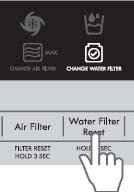
Accent Light / Light Sensor 
This light has three settings: On, Off and Auto. If the light is set to the Auto mode, the Accent Light will automatically turn on and off according to the brightness of room, as detected by the light sensor.
Energy Saver 
The Energy Saver function disables the mullion heater located on the refrigerator door in order to conserve electricity. Press and hold the Energy Saver button for 3 seconds to activate or deactivate this function.
NOTE: Discontinue using the Energy Saver function if excessive moisture begins to collect on the door mullion.
Articulating Mullion
This feature is a metal strip attached to the left door that articulates (rotates) 90 degrees as the door is closed, forming a mullion (base) for the left and right door gaskets to seal against.
Caution When Closing the Door
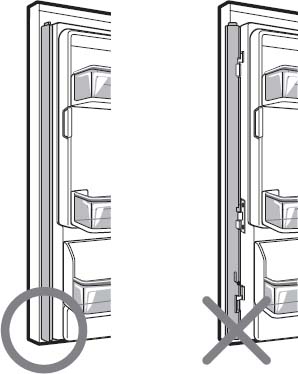
 CAUTION
CAUTION
To reduce the risk of scratching the door or breaking the door mullion, please make sure that the refrigerator door mullion is always folded in.
Door Alarm 
When power is connected to the refrigerator, the door alarm is initially set to ON. When you press the Door Alarm button, the display will change to OFF and the Door Alarm function will deactivate.
When either the refrigerator or the freezer door is left open for more than 60 seconds, the alarm tone will sound to let you know that the door is open.
When you close the door, the door alarm will stop.
Control Lock 
When power is initially connected to the refrigerator, the Lock function is off.
If you want to activate the Lock function to lock other buttons, press and hold the Door Alarm button for three seconds or more. The Control Lock icon will display and the Lock function is now enabled.
When the Lock function is activated, no other buttons will work. The dispenser pad is also deactivated.
To disable the Lock function, press and hold the Door Alarm button for approximately three seconds.
Temperature Mode Switch Function (°F <->°C)
If you want to convert °F to °C or vice versa, press and hold the Freezer Temp and Refrigerator Temp buttons at the same time for approximately five seconds.
Demo Mode (For Store Use Only)
The Demo Mode disables all cooling in the refrigerator and freezer sections to conserve energy while on display in a retail store. When activated, OFF will display on the control panel.

To deactivate:
With either refrigerator door opened, press and hold the Refrigerator Temp and Ultra Ice buttons at the same time for five seconds. The control panel will beep and the temperature settings will display to confirm that Demo Mode is deactivated. Use the same procedure to activate the Demo Mode.
IN-DOOR ICE BIN
 CAUTION
CAUTION
Keep hands and tools out of the ice compartment door and dispenser chute. Failure to do so may result in damage or personal injury.
The icemaker will stop producing ice when the in-door ice bin is full. If you need more ice, empty the ice bin into the extra ice bin in the freezer compartment. During use, the ice can become uneven causing the icemaker to misread the amount of ice cubes and stop producing ice. Shaking the ice bin to level the ice within it can reduce this problem.
NOTE: Storing cans or other items in the ice bin will damage the icemaker.
Keep the ice compartment door closed tightly. If the ice compartment door is not closed tightly, the cold air in the ice bin will freeze food in the refrigerator compartment. This could also cause the icemaker to stop producing ice.
NOTE: If the ON/OFF switch on the icemaker is set to OFF for an extended period of time, it is recommended to empty the ice bin.
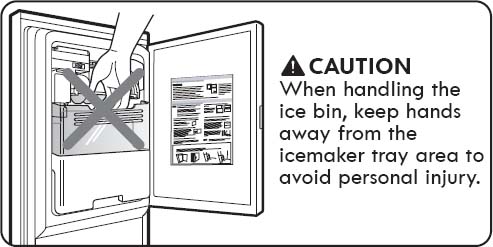
- Pull or push the door handle to open or close the ice compartment.
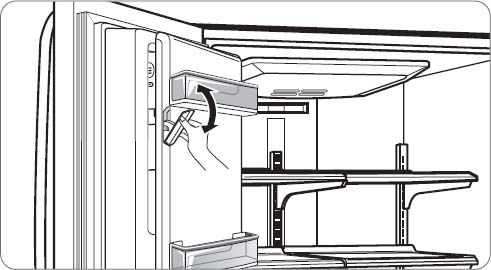
- To remove the in-door ice bin, grip the front handle, slightly lift the lower part, and slowly pull out the bin as shown.
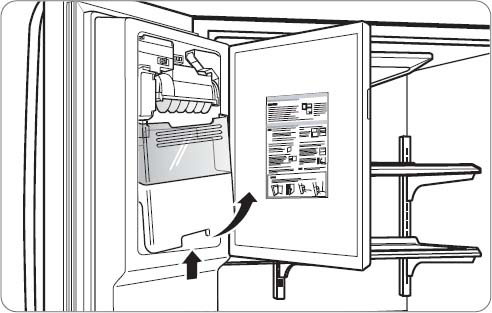
- To reinstall the in-door ice bin, slightly slant the bin during replacement to avoid contact with the icemaker.
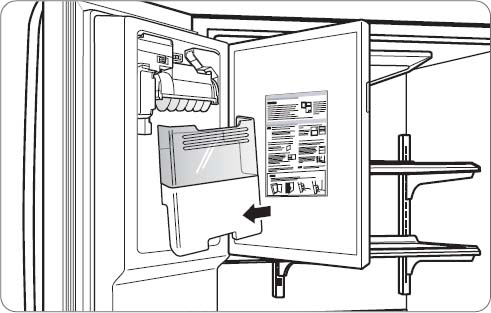
- Avoid touching the ice-detecting sensor when replacing the ice bin. See the label on the ice compartment door for details.
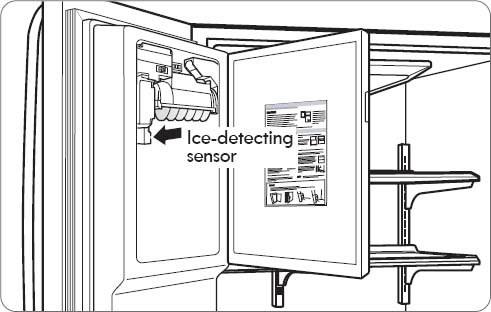
AUTOMATIC ICEMAKER
Ice is made in the automatic icemaker and sent to the dispenser. The icemaker will produce 12 cubes per cycle— approximately 120 cubes in a 24-hour period, depending on freezer compartment temperature, room temperature, number of door openings and other operating conditions.
It takes about 12 to 24 hours for a newly installed refrigerator to begin making ice. Wait 72 hours for full ice production to occur.
Ice making stops when the in-door ice bin is full. When full, the in-door ice bin holds approximately 6 to 8 (12- 16 oz) glasses of ice.
To turn off the automatic icemaker, set the icemaker switch to OFF (O). To turn on the automatic icemaker, set the switch to ON (I).
The water pressure must be between 20 and 120 psi on models without a water filter and between 40 and 120 psi on models with a water filter to produce the normal amount and size of ice cubes.
Foreign substances or frost on the ice-detecting sensor can interrupt ice production. Make sure the sensor area is clean at all times for proper operation.
 WARNING
WARNING
Personal Injury Hazard
DO NOT place fingers or hands on the automatic ice making mechanism while the refrigerator is plugged in.
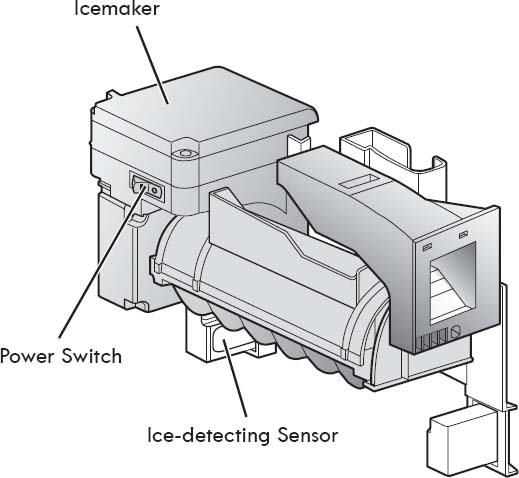
AUTOMATIC ICEMAKER (continued)
 CAUTION
CAUTION
The first ice and water dispensed may include particles or odor from the water supply line or the water tank.
Throw away the first few batches of ice (about 24 cubes). This is also necessary if the refrigerator has not been used for a long time.
Never store beverage cans or other items in the ice bin for the purpose of rapid cooling. Doing so may damage the icemaker or the containers may burst.
If discolored ice is dispensed, check the water filter and water supply. If the problem continues, contact a Sears or other qualified service center. Do not use the ice or water until the problem is corrected.
Keep children away from the dispenser. Children may play with or damage the controls.
The ice passage may become blocked with frost if only crushed ice is used. Remove the frost that accumulates by removing the ice bin and clearing the passage with a rubber spatula. Dispensing cubed ice can also help prevent frost buildup.
Never use thin crystal glass or crockery to collect ice. Such containers may chip or break resulting in glass fragments in the ice.
Dispense ice into a glass before filling it with water or other beverages. Splashing may occur if ice is dispensed into a glass that already contains liquid.
Never use a glass that is exceptionally narrow or deep. Ice may jam in the ice passage and refrigerator performance may be affected.
Keep the glass at a proper distance from the ice outlet. A glass held too close to the outlet may prevent ice from dispensing.
To avoid personal injury, keep hands out of the ice door and passage.
Never remove the dispenser cover.
If ice or water dispenses unexpectedly, turn off the water supply and contact Sears Home Service at 1-800-4-MY HOME®.
WHEN YOU SHOULD SET THE ICEMAKER POWER SWITCH TO OFF (O)
When the water supply will be shut off for several hours.
When the ice bin is removed for more than one or two minutes.
When the refrigerator will not be used for several days.
NOTE: The ice bin should be emptied when the icemaker ON/OFF switch is turned to the OFF position.
NORMAL SOUNDS YOU MAY HEAR
- The icemaker water valve will buzz as the icemaker fills with water. If the power switch is in the ON (I) position, it will buzz even if it has not yet been hooked up to water. To stop the buzzing, move the power switch to OFF (O).
NOTE: Keeping the power switch in the ON (I) position before the water line is connected can damage the icemaker.
- You will hear the sound of cubes dropping into the bin and water running in the pipes as the icemaker refills.
PREPARING FOR VACATION
Set the icemaker power switch to OFF (O) and shut off the water supply to the refrigerator.
NOTE: The ice bin should be emptied anytime the icemaker ON/OFF switch is turned to the OFF (O) position.
If the ambient temperature will drop below freezing, have a qualified technician drain the water supply system to prevent serious property damage due to flooding caused by ruptured water lines or connections.
FOOD STORAGE GUIDE
Wrap or store food in the refrigerator in airtight and moisture-proof material unless otherwise noted. This prevents food odor and taste transfer throughout the refrigerator. For dated products, check date code to ensure freshness.
| Items | How to |
|---|---|
| Butter or margarine | - Keep opened butter in a covered dish or closed compartment. When storing an extra supply, wrap in freezer packaging and freeze. |
| Cheese | - Store in the original wrapping until you are ready to use it. Once opened, rewrap tightly in plastic wrap or aluminum foil. |
| Milk | - Wipe milk cartons. For best storage, place milk on interior shelf, not on door shelf. |
| Eggs | - Store in original carton on interior shelf, not on door shelf. |
| Fruit | - Do not wash or hull the fruit until it is ready to be used. Sort and keep fruit in its original container, in a crisper, or store in a completely closed paper bag on a refrigerator shelf. |
| Leafy vegetables | - Remove store wrapping and trim or tear off bruised and discolored areas. Wash in cold water and drain. Place in plastic bag or plastic container and store in crisper. |
| Vegetables with skins (carrots, peppers) | - Place in plastic bags or plastic container and store in crisper. |
| Fish | - Store fresh fish and shellfish in the freezer section if they are not being consumed the same day of purchase. It is recommended to consume fresh fish and shellfish the same day purchased. |
| Leftovers | - Cover leftovers with plastic wrap, aluminum foil, or plastic containers with tight lids. |
STORING FROZEN FOOD
NOTE: Check a freezer guide or a reliable cookbook for further information about preparing food for freezing or food storage times.
Freezing
Your freezer will not quick-freeze a large quantity of food. Do not put more unfrozen food into the freezer than will freeze within 24 hours (no more than 2 to 3 lbs. of food per cubic foot of freezer space). Leave enough space in the freezer for air to circulate around packages. Be careful to leave enough room at the front so the door can close tightly.
Storage times will vary according to the quality and type of food, the type of packaging or wrap used (how airtight and moisture-proof) and the storage temperature. Ice crystals inside a sealed package are normal. This simply means that moisture in the food and air inside the package have condensed, creating ice crystals.
NOTE: Allow hot foods to cool at room temperature for 30 minutes, then package and freeze. Cooling hot foods before freezing saves energy.
Packaging
Successful freezing depends on correct packaging. When you close and seal the package, it must not allow air or moisture in or out. If it does, you could have food odor and taste transfer throughout the refrigerator and could also dry out frozen food.
Packaging recommendations:
Rigid plastic containers with tight-fitting lids
Straight-sided canning/freezing jars
Heavy-duty aluminum foil
Plastic-coated paper
Non-permeable plastic wraps
Specified freezer-grade self-sealing plastic bags
Follow package or container instructions for proper freezing methods.
Do not use
Bread wrappers
Non-polyethylene plastic containers
Containers without tight lids
Wax paper or wax-coated freezer wrap
Thin, semi-permeable wrap
 CAUTION: Do not keep beverage cans or plastic food containers in the freezer compartment. They may break or burst if they freeze.
CAUTION: Do not keep beverage cans or plastic food containers in the freezer compartment. They may break or burst if they freeze.
REFRIGERATOR SECTION
WATER DISPENSER
To dispense cold water, push on the dispenser switch with a glass.
NOTE: The dispenser is equipped with a light that turns on when the dispenser pad is engaged.
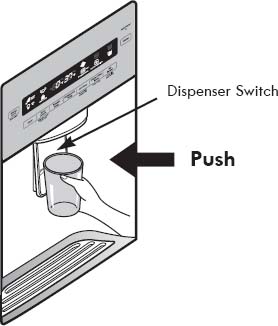
Some dripping may occur after dispensing. Hold your cup beneath the dispenser for a few seconds after dispensing to catch all of the drops.
 WARNING: Do not put your fingers up the ice chute opening. Doing so can result in severe injury.
WARNING: Do not put your fingers up the ice chute opening. Doing so can result in severe injury.
 CAUTION: Do not dispense ice into fine china or crystal glasses. China or crystal can break.
CAUTION: Do not dispense ice into fine china or crystal glasses. China or crystal can break.
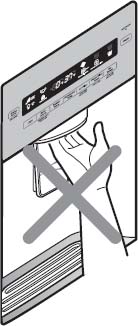
Press down on either of the front corners to remove the tray.
Note: There is no drain beneath the tray. You may need to empty the tray of any liquid that collects in it
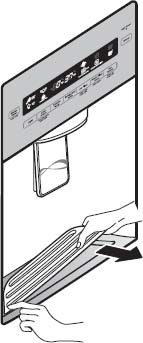
REFRIGERATOR SHELVES
The shelves in your refrigerator are adjustable to meet your individual storage needs. Your model may have glass or wire shelves.
Adjusting the shelves to fit different heights of items will make finding the exact item you want easier. Doing so will also reduce the amount of time the refrigerator door is open which will save energy.
IMPORTANT: Do not clean glass shelves with warm water while they are cold. Shelves may break if exposed to sudden temperature changes or impact.
 CAUTION: Glass shelves are heavy. Use special care when removing them.
CAUTION: Glass shelves are heavy. Use special care when removing them.
Adjusting Shelves (Cantilever)
Remove shelves from the shipping position and replace shelves in the position you want.
To remove a shelf—Tilt up the front of the shelf in the direction of ➀ and lift it in the direction of ➁. Pull the shelf out.
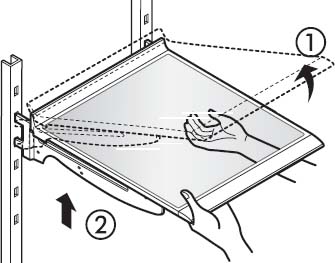
To reinstall a shelf—Tilt the front of the shelf up and guide the shelf hooks into the slots at a desired height. Then, lower the front of the shelf so that the hooks drop into the slots.
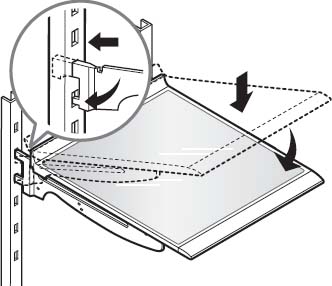
 CAUTION: Make sure that shelves are level from one side to the other. Failure to do so may result in the shelf falling or spilling food.
CAUTION: Make sure that shelves are level from one side to the other. Failure to do so may result in the shelf falling or spilling food.
Folding Shelf (on some models)
You can store taller items, such as a gallon container or bottles, by simply pushing the front half of the shelf underneath the back half of the shelf. Pull the front of the shelf toward you to return to a full shelf.
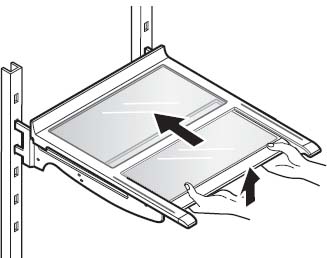
HUMIDITY CONTROLLED CRISPER
The crispers provide fresher tasting fruit and vegetables by letting you easily control humidity inside the drawer.
You can control the amount of humidity in the moisture-sealed crispers by adjusting the control to any setting between VEGETABLE and FRUIT.
VEGETABLE keeps moist air in the crisper for best storage of fresh, leafy vegetables.
FRUIT lets moist air out of the crisper for best storage of fruit.
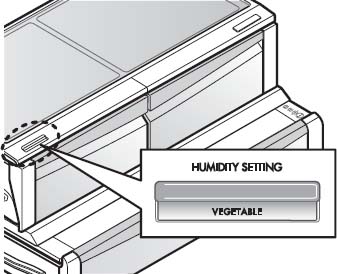
REMOVING THE HUMIDITY CONTROLLED CRISPER
To remove, pull the drawer out to full extension.
Lift the front of the crisper up, then pull it straight out.
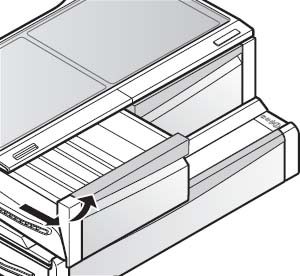
- To install, slightly tilt up the front, insert the drawer into the frame and push it back into place.
To remove the glass
Lift up the glass under the crisper cover.
Pull the glass up and out.
NOTE: Pantry drawer not shown for clarity.
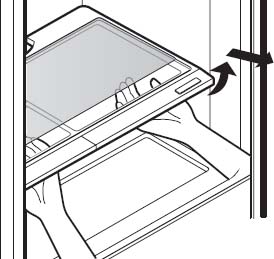
TEMPERATURE CONTROLLED PANTRY DRAWER
The Temperature Controlled Pantry Drawer provides storage space with a variable temperature control that can keep the compartment at a slightly different temperature than the refrigerator section. This drawer can be used for large party trays, deli items and beverages. (This drawer should not be used for vegetables that require high humidity.)
Press the button to choose between Meat (Coldest), Deli (Colder) and Produce (Cold).
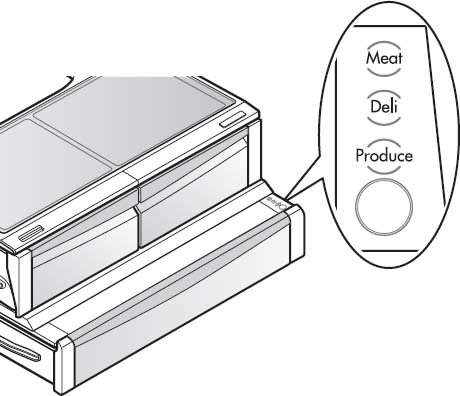
DOOR BIN
The door bins are removable for easy cleaning and adjustment.
To remove the bin, simply lift the bin up and pull straight out.
To replace the bin, slide it in above the desired support and push down until it snaps into place.
NOTE: Some bins may vary in appearance and will only fit in one location.
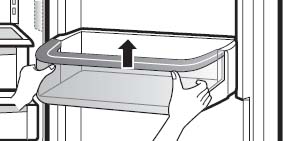
REPLACING THE AIR FILTER
It is recommended that you replace the air filter:
Approximately every six months.
When the CHANGE AIR FILTER light turns on.
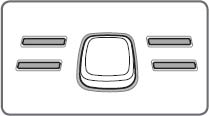
Remove the Old Filter
Turn the filter cover to the left to detach from the refrigerator wall. The filter is located on the inside of the filter cover. Remove the filter from the cover and replace it with a new filter.
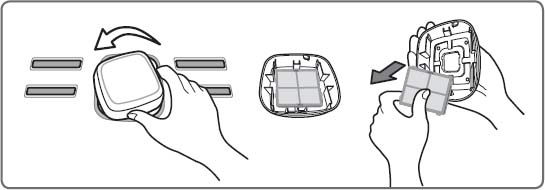
Install a New Air Filter.
Place the new filter inside of the cover with the side that says “Front” facing outward. Turn the filter cover to the right to attach to the refrigerator wall.
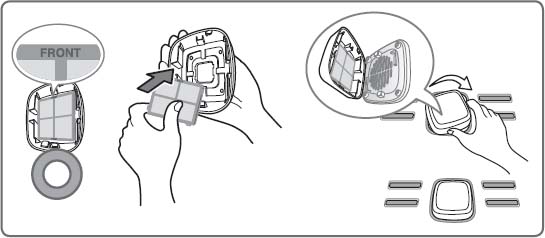
After changing the filter, push and hold the Air Filter button for three seconds to reset the filter sensor.
NOTE: To purchase a replacement water filter, visit a Sears store or call 1-800-4-MY-HOME®. Also, you may order on-line at www.sears.com/partsdirect
FREEZER SECTION
EXTRA ICE BIN
Pull the Freezer Drawer and the top Pullout Drawer out as far as possible to remove the Extra Ice Bin.
Gently lift and pull out the ice bin.
To replace, pull both drawers out as far as possible, and set the bin in its correct position in the Pullout Drawer. Close the Pullout Drawer and then the Freezer Drawer.
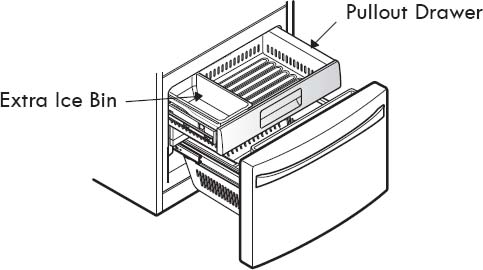
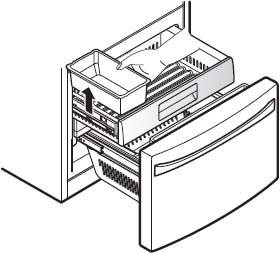
 CAUTION: Pinch hazard! Keep hands and feet clear of the bottom of the freezer drawer when opening and closing.
CAUTION: Pinch hazard! Keep hands and feet clear of the bottom of the freezer drawer when opening and closing.
Pullout Drawer
Top Drawer
- To remove, pull the drawer out to full extension. On the left rail, use a flat blade screwdriver to push in on the tab to release the drawer from the rail, as shown below. Once the left side is loose, push the tab on the right side with your finger to release the drawer. Lift the front of the drawer up, then pull it straight out.
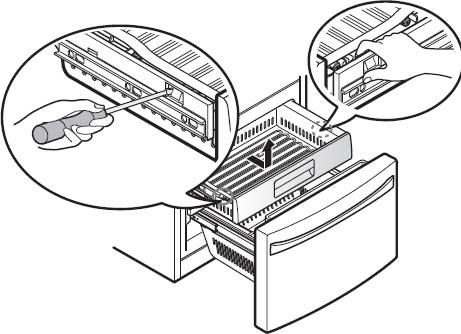
- To replace, slightly tilt up the front of the drawer, insert drawer into the frame, and push drawer back into place until you hear a click.
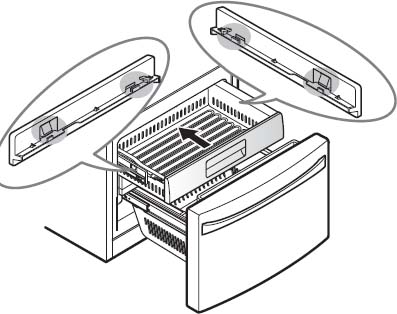
Middle Drawer
- To remove, pull the drawer out to full extension. Lift the front of the drawer up, then pull it straight out.
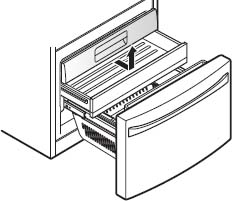
- To replace, slightly tilt up the front of the drawer, insert the drawer into the frame, and push it back into place.
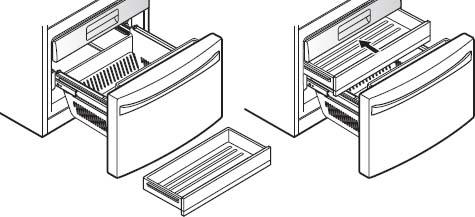
DURABASE
To remove the Durabase, push it to the back as much as possible. Tilt up the front of the Durabase and pull straight out.
To replace, insert the Durabase in the rail assembly.
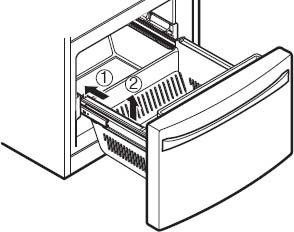
DURABASE DIVIDER
The Durabase divider allows you to organize the Durabase area into sections. It can be adjusted from side to side to accommodate items of different sizes.
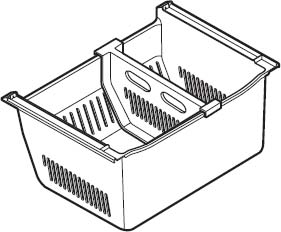
 WARNING: If the Durabase divider is removed, there is enough open space for children or pets to crawl inside. To prevent accidental child and pet entrapment or suffocation risk, DO NOT allow children or pets to touch or go near the drawer.
WARNING: If the Durabase divider is removed, there is enough open space for children or pets to crawl inside. To prevent accidental child and pet entrapment or suffocation risk, DO NOT allow children or pets to touch or go near the drawer.
WATER FILTER
WATER FILTER 
It is recommended that you replace the water filter:
Approximately every six months.
When the water filter indicator turns on.
When the water dispenser output decreases.
When the ice cubes are smaller than normal.
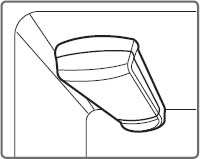
- Remove the old water filter.
Lower or remove the top left shelf to allow the water filter to rotate all the way down.
Pinch the sides to open the water filter cover.
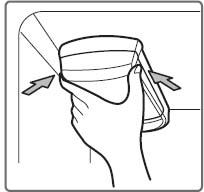
NOTE: Replacing the water filter causes a small amount of water (around 1 oz. or 25 cc) to drain. Place a cup under the front end of the water filter cover to collect any leaking water. Hold the water filter upright, once it is removed, to prevent any remaining water from spilling out of the water filter.
- Pull the water filter downward and pull out. Make sure to rotate the filter down completely before pulling it out of the manifold hole.
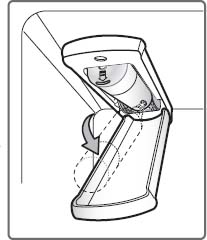
- Replace with a new water filter.
- Take the new water filter out of its packing and remove the protective cover from the o-rings. With water filter tabs in the horizontal position, push the new water filter into the manifold hole until it stops.
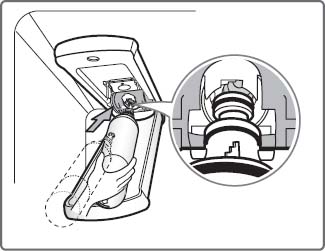
- Rotate the water filter up into position and close the cover. The cover will click when closed correctly.
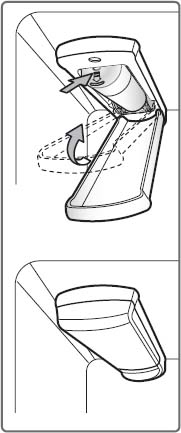
After the water filter is replaced, dispense 2.5 gallons of water (flush for approximately 5 minutes) to remove trapped air and contaminates from the system. Do not dispense the entire 2.5 gallon amount continuously. Depress and release the dispenser pad for cycles of 30 seconds ON and 60 seconds OFF.
Water Filter Bypass Plug Keep the water filter bypass plug. You MUST use the water filter bypass plug when a replacement water filter cartridge is not available.
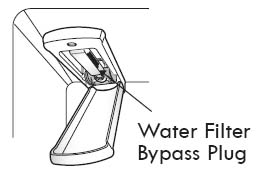
 CAUTION: DO NOT operate refrigerator without water filter or water filter plug installed.
CAUTION: DO NOT operate refrigerator without water filter or water filter plug installed.
NOTE: To purchase a replacement water filter, visit a Sears store or call 1-800-4-MY-HOME®. Also, you may order on-line at www.sears.com/partsdirect
Performance Data Sheet
The concentration of the indicated substances in water entering the system was reduced to a concentration less than or equal to the permissible limit for water leaving the system as specified in NSF/ANSI Standard 42 and Standard 53.
 |
System tested and certified by NSF International against NSF/ANSI Standard 42 and Standard 53 for the reduction of substances listed below. |
|---|
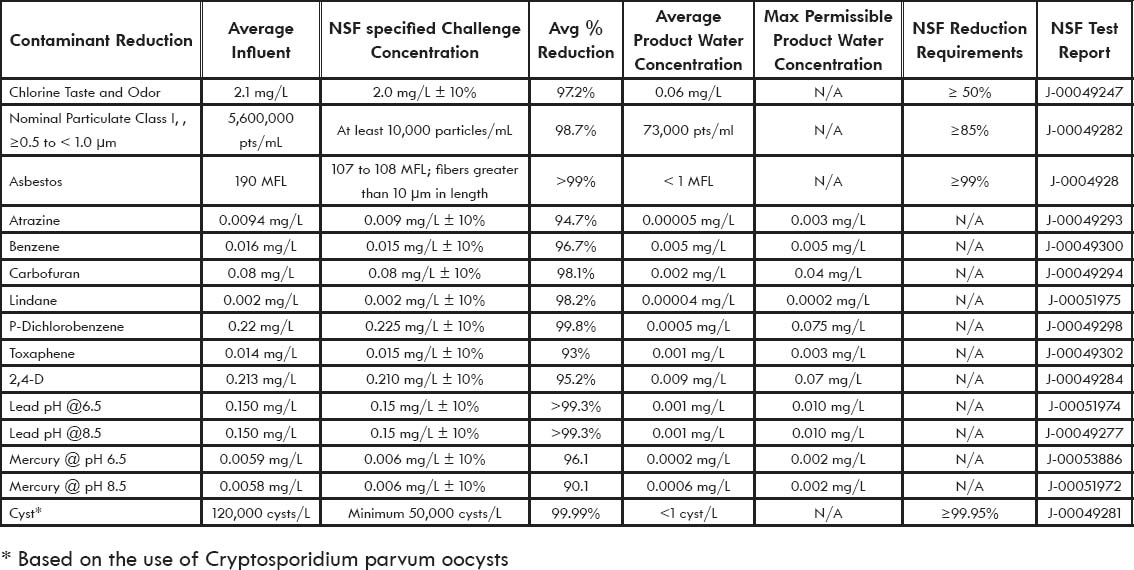
| Application Guidelines/Water Supply Parameters | |
|---|---|
| Service Flow | 0.5 gpm (1.9 lpm) |
| Water Supply | Potable Water |
| Water Pressure | 40-120 psi (138 - 827 kPa) |
| Water Temperature | 33°F - 100°F (0.6°C - 38°C) |
It is essential that the manufacturer’s recommended installation, maintenance and water filter replacement requirements be carried out for the product to perform as advertised.
NOTE: While the testing was performed under standard laboratory conditions, actual performance may vary.
For estimated costs of replacement elements, please call
1-800-469-4663 or visit our website at
3M is a trademark of 3M Company.
NSF is a trademark of NSF International.
© 2009 3M Company. All rights reserved.
 WARNING
WARNING
To reduce the risk associated with ingestion of contaminants: Do not use with water that is microbiologically unsafe or of unknown quality without adequate disinfection before and after of the system. Systems certified for cyst reduction may be used on disinfected water that may contain filterable cysts. EPA Establishment Number 10350-MN-005
 CAUTION
CAUTION
To reduce the risk associated with property damage due to water leakage:
Read and follow the Water Filter instructions before installation and use of this system.
Installation and use MUST comply with all state and local plumbing codes.
Do not install if water pressure exceeds 120 psi (827 kPa). Contact a plumbing professional if you are uncertain of how to check your water pressure.
Do not install where water hammer conditions may occur. If water hammer conditions exist, you must install a water hammer arrester. Contact a plumbing professional if you are uncertain of how to check for this condition.
Do not install on hot water supply lines. The maximum operating water temperature of this water filter system is 100°F (38°C).
Protect water filter from freezing. Do not operate refrigerator in ambient conditions below 55°F (12.7°C). Drain water filter when storing unit in temperatures below 40°F (4.4°C).
The disposable water filter must be replaced every six months, at the rated capacity, or if a noticeable reduction in flow rate occurs.
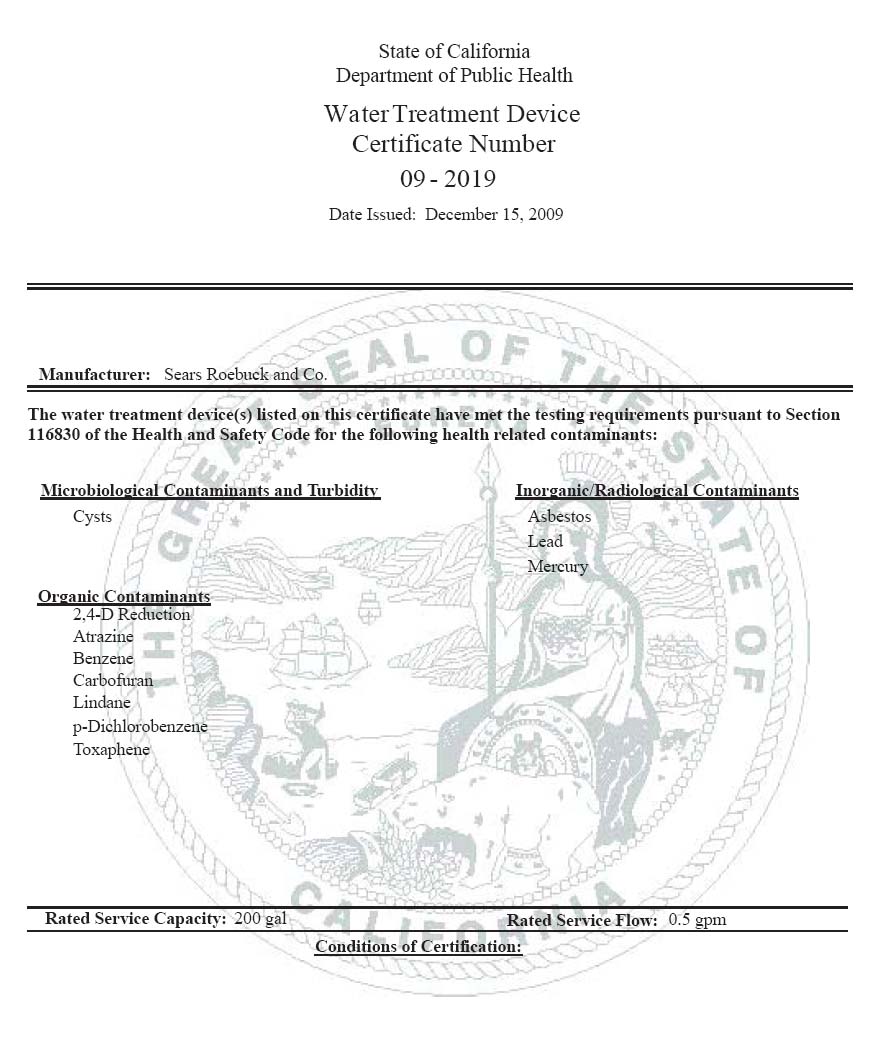
CARE AND CLEANING
 WARNING
WARNING
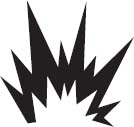
Explosion Hazard
Use non-flammable cleaner. Failure to do so can result in fire, explosion, or death.
Both the refrigerator and freezer sections defrost automatically; however, clean both sections about once a month to prevent odors. Wipe up spills immediately.
GENERAL CLEANING TIPS
Unplug refrigerator or disconnect power.
Remove all removable parts, such as shelves, crispers, etc. Refer to sections in Using Your Refrigerator for removal instructions.
Use a clean sponge or soft cloth and a mild detergent in warm water. Do not use abrasive or harsh cleaners.
Hand wash, rinse and dry all surfaces thoroughly.
Plug in refrigerator or reconnect power.
EXTERIOR
Waxing external painted metal surfaces helps provide rust protection. Do not wax plastic parts. Wax painted metal surfaces at least twice a year using appliance wax (or auto paste wax). Apply wax with a clean, soft cloth.
For products with a stainless steel exterior, use a clean sponge or soft cloth and a mild detergent in warm water. Do not use abrasive or harsh cleaners. Dry thoroughly with a soft cloth.
INSIDE WALLS (allow freezer to warm up so the cloth will not stick)
To help remove odors, you can wash the inside of the refrigerator with a mixture of baking soda and warm water. Mix 2 tablespoons of baking soda to 1 quart of water (26 g soda to 1 liter water.) Be sure the baking soda is completely dissolved so it does not scratch the surfaces of the refrigerator.
 CAUTION: While cleaning the inside, do not spray water.
CAUTION: While cleaning the inside, do not spray water.
DOOR LINERS AND GASKETS
Use a clean sponge or soft cloth and a mild detergent in warm water. Do not use cleaning waxes, concentrated detergents, bleaches, or cleaners containing petroleum on plastic refrigerator parts.
PLASTIC PARTS (Covers and Panels)
Use a clean sponge or soft cloth and a mild detergent in warm water. Do not use window sprays, abrasive cleansers, or flammable fluids. These can scratch or damage the material.
CONDENSER COILS
Use a vacuum cleaner with an attachment to clean the condenser cover and vents. Do not remove the panel covering the condenser coil area.
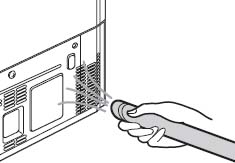
LIGHT BULB REPLACEMENT
 WARNING
WARNING
Electrical Shock Hazard
Before replacing a Compartment Lamp, either unplug the refrigerator or turn off power at the circuit breaker or fuse box.
NOTE: The refrigerator and freezer compartment lights have LED interior lighting, and service should be performed by a qualified technician.
POWER INTERRUPTIONS
If the power will be out for 24 hours or less, keep all refrigerator doors closed to help foods stay cold and frozen.
If the power will be out for more than 24 hours, remove all frozen food and store it in a frozen food locker.
WHEN YOU GO ON VACATION
If you choose to leave the refrigerator on while you are away, follow these steps to prepare your refrigerator before you leave.
Use up any perishables and freeze other items.
Turn off the icemaker and empty the ice bin.
If you choose to turn the refrigerator off before you leave, follow these steps.
Remove all food from the refrigerator.
Depending on your model, set the thermostat control (refrigerator control) to OFF. See the Setting the Controls section.
Clean the refrigerator, wipe it and dry well.
Tape rubber or wood blocks to the tops of both doors to prop them open far enough for air to get in. This stops odor and mold from building up.
WHEN YOU MOVE
When you are moving your refrigerator to a new home, follow these steps to prepare it for the move.
Remove all food from the refrigerator and pack all frozen food in dry ice.
Unplug the refrigerator.
Clean, wipe and dry thoroughly.
Take out all removable parts, wrap them well and tape them together so they do not shift and rattle during the move. Refer to the Using your Refrigerator section for removable instructions.
Depending on the model, raise the front of the refrigerator so it rolls easier OR screw in the leveling legs all the way so they do not scrape the floor. See the Door Closing section.
Tape the doors shut and tape the power cord to the refrigerator cabinet.
When you get to your new home, put everything back and refer to the Refrigerator Installation section for preparation instructions.
CONNECTING THE WATER LINE
BEFORE YOU BEGIN
This water line installation is not covered by the refrigerator warranty. Follow these instructions carefully to minimize the risk of expensive water damage.
Water hammer (water banging in the pipes) in house plumbing can cause damage to refrigerator parts and can lead to water leakage or flooding. Call a qualified plumber to correct water hammer before installing the water supply line to the refrigerator.
 CAUTION: To prevent burns and product damage, only connect the refrigerator water line to a cold water supply.
CAUTION: To prevent burns and product damage, only connect the refrigerator water line to a cold water supply.
If you use your refrigerator before connecting the water line, make sure the icemaker power switch is in the OFF (O) position.
 CAUTION: Do not install the icemaker tubing in areas where temperatures fall below freezing.
CAUTION: Do not install the icemaker tubing in areas where temperatures fall below freezing.
WATER PRESSURE
A cold water supply. The water pressure must be between 20 and 120 psi on models without a water filter and between 40 and 120 psi on models with a water filter.
If a reverse osmosis water filtration system is connected to your cold water supply, this water line installation is not covered by the refrigerator warranty. Follow the following instructions carefully to minimize the risk of expensive water damage.
If a reverse osmosis water filtration system is connected to your cold water supply, the water pressure to the reverse osmosis system needs to be a minimum of 40 to 60 psi (2.8 kgf/cm2 ~ 4.2 kgf/cm2, less than 2.0~3.0 sec. to fill a cup of 7 oz capacity).
If the water pressure from the reverse osmosis system is less than 21 psi or 1.5 kgf/cm2 (takes more than 4.0 sec to fill a cup of 7 oz capacity):
Check to see if the sediment filter in the reverse osmosis system is blocked. Replace the filter necessary.
Allow the storage tank on the reverse osmosis system to refill after heavy usage.
If the issue concerning water pressure from reverse osmosis remains, call a licensed, qualified plumber.
All installations must be in accordance with local plumbing code requirements.
 CAUTION: Wear eye protection during installation to prevent injury.
CAUTION: Wear eye protection during installation to prevent injury.
WHAT YOU WILL NEED
- Copper Tubing, ¼ in. outer diameter, to connect the refrigerator to the water supply. Be sure both ends of the tubing are cut square.
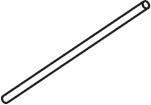
To determine how much tubing you need: measure the distance from the water valve on the back of the refrigerator to the water supply pipe. Then, add 8 feet (2.4 m). Be sure there is sufficient extra tubing (about 8 feet [2.4 m] coiled into 3 turns of about 10 in. [25 cm] diameter) to allow the refrigerator to move out from the wall after installation.
Power drill.
½ in. or adjustable wrench.
Flat blade and Phillips head screwdrivers.
Two ¼ in. outer diameter compression nuts and 2 ferrules (sleeves) to connect the copper tubing to the shutoff valve and the refrigerator water valve.
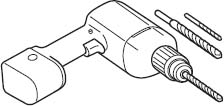
- If your existing copper water line has a flared fitting at the end, you will need an adapter (available at plumbing supply stores) to connect the water line to the refrigerator OR you can cut off the flared fitting with a tube cutter and then use a compression fitting.
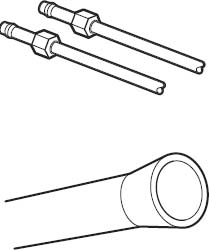
- Shutoff valve to connect to the cold water line. The shutoff valve should have a water inlet with a minimum inside diameter of
 in. at the point of connection to the COLD WATER LINE. Saddle-type shutoff valves are included in many water supply kits. Before purchasing, make sure a saddle-type valve complies with your local plumbing codes.
in. at the point of connection to the COLD WATER LINE. Saddle-type shutoff valves are included in many water supply kits. Before purchasing, make sure a saddle-type valve complies with your local plumbing codes.
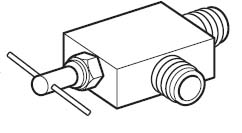
NOTE: A Self Piercing Saddle Type Water Valve should not be used.
WARNING
Electrical Shock Hazard
When using any electrical device (such as a power drill) during installation, be sure the device is battery powered, double insulated or grounded in a manner that will prevent the hazard of electric shock.
INSTALLATION INSTRUCTIONS
Install the shutoff valve on the nearest frequently used drinking water line.
SHUT OFF THE MAIN WATER SUPPLY
Turn on the nearest faucet to relieve the pressure on the line.
CHOOSE THE VALVE LOCATION
Choose a location for the valve that is easily accessible. It is best to connect into the side of a vertical water pipe. When it is necessary to connect into a horizontal water pipe, make the connection to the top or side, rather than at the bottom, to avoid drawing off any sediment from the water pipe.
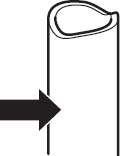
DRILL THE HOLE FOR THE VALVE
Drill a ¼ in. hole in the water pipe using a sharp bit. Remove any burrs resulting from drilling the hole in the pipe. Be careful not to allow water to drain into the drill. Failure to drill a ¼ in. hole may result in reduced ice production or smaller cubes.
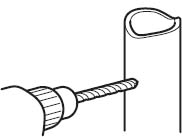
NOTE: The hookup line cannot be white, plastic tubing. Licensed plumbers must use only copper tubing NDA tubing #49595 or 49599 or Cross Link Polyethylene (PEX) tubing.
FASTEN THE SHUTOFF VALVE
Fasten the shutoff valve to the cold water pipe with the pipe clamp.
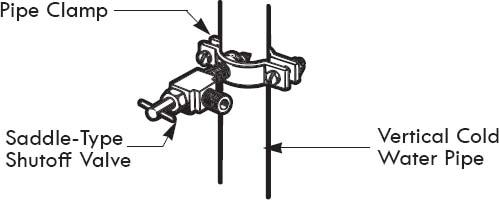
NOTE: Commonwealth of Massachusetts Plumbing Codes 248CMR shall be adhered to. Saddle valves are illegal and use is not permitted in Massachusetts. Consult with your licensed plumber.
- TIGHTEN THE PIPE CLAMP
Tighten the clamp screws until the sealing washer begins to swell.
NOTE: Do not overtighten clamp or you may crush the tubing.
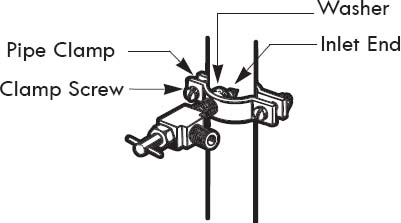
ROUTE THE TUBING
Route the tubing between the cold water line and the refrigerator.
Route the tubing through a hole drilled in the wall or floor (behind the refrigerator or adjacent base cabinet) as close to the wall as possible.
NOTE: Be sure there is sufficient extra tubing (about 8 feet coiled into 3 turns of about 10 in. diameter) to allow the refrigerator to move out from the wall after installation.
CONNECT THE TUBING TO THE VALVE
Place the compression nut and ferrule (sleeve) for copper tubing onto the end of the tubing and connect it to the shutoff valve. Make sure the tubing is fully inserted into the valve. Tighten the compression nut securely.
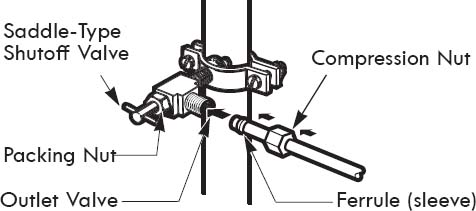
NOTE: Commonwealth of Massachusetts Plumbing Codes 248CMR shall be adhered to. Saddle valves are illegal and use is not permitted in Massachusetts. Consult with your licensed plumber.
FLUSH OUT THE TUBING
Turn the main water supply on and flush out the tubing until the water is clear.
Shut the water off at the water valve after about one quart of water has been flushed through the tubing.
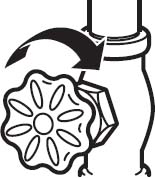
- CONNECT THE TUBING TO THE REFRIGERATOR
NOTE: Before making the connection to the refrigerator, be sure that the refrigerator power cord is not plugged into the wall outlet.
Remove the plastic flexible cap from the water valve.
Place the compression nut and ferrule (sleeve) onto the end of the tubing as shown.
Insert the end of the copper tubing into the connection as far as possible. While holding the tubing, tighten the fitting
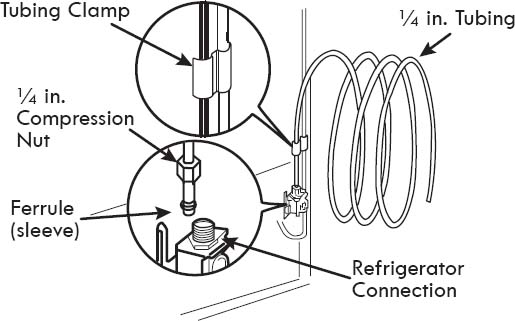
TURN THE WATER ON AT THE SHUTOFF VALVE
Tighten any connections that leak.
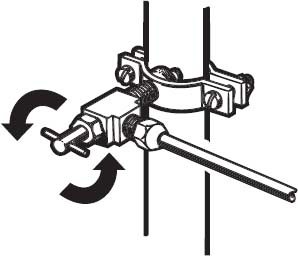
 CAUTION: Check to see if leaks occur at the water line connections.
CAUTION: Check to see if leaks occur at the water line connections.
PLUG IN THE REFRIGERATOR
Arrange the coil of tubing so that it does not vibrate against the back of the refrigerator or against the wall. Push the refrigerator back to the wall.
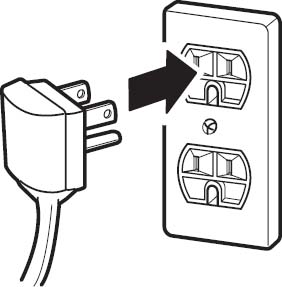
START THE ICEMAKER
Set the icemaker power switch to the ON position.
The icemaker will not begin to operate until it reaches its operating temperature of 15°F (–9°C) or below. It will then begin operation automatically if the icemaker power switch is in the ON (I) position.
TROUBLESHOOTING GUIDE
Before conducting troubleshooting, make sure that the following basic requirements are met:
| Service Flow | 0.5 gpm (1.9 lpm) |
|---|---|
| Water Supply | Potable Water |
| Water Pressure | 40-120 psi (138 - 827 kPa) |
| Operating Ambient Temperature Limits | 55°F - 110°F |
| Electrical Ratings | 115 Volts, 60 Hz, AC only, and fused at 15 or 20 amperes. |
COOLING
| Problem | Possible Causes | Solutions |
|---|---|---|
| Refrigerator and Freezer section are not cooling. | The refrigerator control is set to OFF (some models). | Turn the control ON. Refer to the Setting the Controls section for proper temperature settings. |
| Refrigerator is set to demo mode. | Demo Mode allows the lights and control display to work normally while disabling cooling to save energy while on the showroom floor. Refer to the Setting the Controls section for instructions on how to disable Demo Mode. | |
| Refrigerator is in the defrost cycle. | During the defrost cycle, the temperature of each compartment may raise slightly. Wait 30 minutes and confirm the proper temperature has been restored once the defrost cycle has completed. | |
| Refrigerator was recently installed. | It may take up to 24 hours for each compartment to reach the desired temperature. | |
| Refrigerator was recently relocated. | If the refrigerator was stored for a long period of time or moved on its side, it is necessary for the refrigerator to stand upright for 24 hours before connecting it to power. | |
| Cooling System runs too much. | Refrigerator is replacing an older model. | Modern refrigerators require more operating time but use less energy due to more efficient technology. |
| Refrigerator was recently plugged in or power restored. | The refrigerator will take up to 24 hours to cool completely. | |
| Door opened often or a large amount of food / hot food was added. | Adding food and opening the door warms the refrigerator, requiring the compressor to run longer in order to cool the refrigerator back down. In order to conserve energy, try to get everything you need out of the refrigerator at once, keep food organized so it is easy to find, and close the door as soon as the food is removed. (Refer to the Food Storage guide.) | |
| Doors are not closed completely. | Firmly push the doors shut. If they will not shut all the way, see the Doors will not close completely or pop open section in Parts & Features Troubleshooting. | |
| Refrigerator is installed in a hot location. | The compressor will run longer under warm conditions. At normal room temperatures (70°F) expect your compressor to run about 40% to 80% of the time. Under warmer conditions, expect it to run even more often. The refrigerator should not be operated above 110°F. | |
| Condenser / back cover is clogged. | Use a vacuum cleaner with an attachment to clean the condenser cover and vents. Do not remove the panel covering the condenser coil area. | |
| Refrigerator or Freezer section is too warm. | Refrigerator was recently installed. | It may take up to 24 hours for each compartment to reach the desired temperature. |
| Air vents are blocked. | Rearrange items to allow air to flow throughout the compartment. Refer to the Airflow diagram in the Using Your Refrigerator section. | |
| Doors are opened often or for long periods of time. | When the doors are opened often or for long periods of time, warm, humid air enters the compartment. This raises the temperature and moisture level within the compartment. To lessen the effect, reduce the frequency and duration of door openings. | |
| Unit is installed in a hot location. | The refrigerator should not be operated in temperatures above 110F. | |
| A large amount of food or hot food was added to either compartment. | Adding food warms the compartment requiring the cooling system to run. Allowing hot food to cool to room temperature before putting it in the refrigerator will reduce this effect. | |
| Doors not closed correctly. | See the Doors will not close correctly or pop open section in Parts & Features Troubleshooting. | |
| Temperature control is not set correctly. | If the temperature is too warm, adjust the control one increment at a time and wait for the temperature to stabilize. Refer to the Setting the Controls section for more information. | |
| Defrost cycle has recently completed. | During the defrost cycle, the temperature of each compartment may raise slightly and condensation may form on the back wall. Wait 30 minutes and confirm the proper temperature has been restored once the defrost cycle has completed. | |
| Interior moisture buildup. | Doors are opened often or for long periods of time. | When the doors are opened often or for long periods of time, warm, humid air enters the compartment. This raises the temperature and moisture level within the compartment. To lessen the effect, reduce the frequency and duration of door openings. |
| Doors not closed correctly. | See the Doors will not close correctly section in the Troubleshooting section. | |
| Weather is humid. | Humid weather allows additional moisture to enter the compartments when the doors are opened leading to condensation or frost. Maintaining a reasonable level of humidity in the home will help to control the amount of moisture that can enter the compartments. | |
| Defrost cycle recently completed. | During the defrost cycle, the temperature of each compartment may raise slightly and condensation may form on the back wall. Wait 30 minutes and confirm that the proper temperature has been restored once the defrost cycle has completed. | |
| Food is not packaged correctly. | Food stored uncovered or unwrapped, and damp containers can lead to moisture accumulation within each compartment. Wipe all containers dry and store food in sealed packaging to prevent condensation and frost. |
COOLING/ICE & WATER
| Problem | Possible Causes | Solutions |
|---|---|---|
| Food is freezing in the refrigerator compartment. | Food with high water content was placed near an air vent. | Rearrange items with high water content away from air vents. |
| Refrigerator temperature control is set incorrectly. | If the temperature is too cold, adjust the control one increment at a time and wait for the temperature to stabilize. Refer to the Setting the Controls section for more information. | |
| Refrigerator is installed in a cold location. | When the refrigerator is operated in temperature below 41°F (5°C), food can freeze in the refrigerator compartment. The refrigerator should not be operated in temperature below 55°F (13°C). | |
| Frost or ice crystals form on frozen food (outside of package). | Door is opened frequently or for long periods of time. | When the doors are opened often or for long periods of time, warm, humid air enters the compartment. This raises the temperature and moisture level within the compartment. Increased moisture will lead to frost and condensation. To lessen the effect, reduce the frequency and duration of door openings. |
| Door is not closing properly. | Refer to the Doors will not close correctly or pop open section in the Troubleshooting section. | |
| Refrigerator or Freezer section is too cold. | Incorrect temperature control settings. | If the temperature is too cold, adjust the control one increment at a time and wait for the temperature to stabilize. Refer to the Setting the Controls section for more information. |
| Frost or ice crystals on frozen food (inside of sealed package). | Condensation from food with a high water content has frozen inside of the food package. | This is normal for food items with a high water content. |
| Food has been left in the freezer for a long period of time. | Do not store food items with high water content in the freezer for a long period of time. | |
| Icemaker is not making enough ice. | Demand exceeds ice storage capacity. | The icemaker will produce approximately 100 cubes in a 24 hour period. |
| House water supply is not connected, valve is not turned on fully, or valve is clogged. | Connect the refrigerator to a cold water supply with adequate pressure and turn the water shutoff valve fully open. If the problem persists, it may be necessary to contact a plumber. | |
| Water filter has been exhausted. | It is recommended that you replace the water filter: - Approximately every six months. - When the water filter indicator turns on. - When the water dispenser output decreases. - When the ice cubes are smaller than normal. |
|
| Low house water supply pressure. | The water pressure must be between 20 and 120 psi on models without a water filter and between 40 and 120 psi on models with a water filter. If the problem persists, it may be necessary to contact a plumber. | |
| Reverse Osmosis filtration system is used. | Reverse osmosis filtration systems can reduce the water pressure below the minimum amount and result in icemaker issues. (Refer to Water Pressure section.) | |
| Tubing connecting refrigerator to house supply valve is kinked. | The tubing can kink when the refrigerator is moved during installation or cleaning resulting in reduced water flow. Straighten or repair the water supply line and arrange it to prevent future kinks. | |
| Doors are opened often or for long periods of time. | If the doors of the unit are opened often, ambient air will warm the refrigerator which will prevent the unit from maintaining the set temperature. Lowering the refrigerator temperature can help, as well as not opening the doors as frequently. | |
| Doors are not closed completely. | If the doors are not properly closed, ice production will be affected. See the Doors will not close completely or pop open section in Parts & Features Troubleshooting for more information. | |
| The temperature setting for the freezer is too warm. | The recommended temperature for the freezer compartment for normal ice production is 0°F. If the freezer temperature is warmer, ice production will be affected. | |
| Dispensing water slowly. | Water filter has been exhausted. | It is recommended that you replace the water filter: - Approximately every six months. - When the water filter indicator turns on. - When the water dispenser output decreases. - When the ice cubes are smaller than normal. |
| Reverse osmosis filtration system is used. | Reverse osmosis filtration systems can reduce the water pressure below the minimum amount and result in icemaker issues. If the problem persists, it may be necessary to contact a plumber. | |
| Low house water supply pressure. | The water pressure must be between 20 and 120 psi on models without a water filter and between 40 and 120 psi on models with a water filter. If the problem persists, it may be necessary to contact a plumber. | |
| Not dispensing ice. | Doors are not closed completely. | |
| Infrequent use of the dispenser. | Infrequent use of the ice dispenser will cause the cubes to stick together over time, which will prevent them from properly dispensing. Check the ice bin for ice cubes clumping/sticking together. If they are, break up the ice cubes to allow for proper operation. | |
| The delivery chute is clogged with frost or ice fragments. | Eliminate the frost or ice fragments by removing the ice bin and clearing the chute with a plastic utensil. Dispensing cubed ice can also help prevent frost or ice fragment buildup. | |
| The dispenser display is locked. | Press and hold the Lock button for three seconds to unlock the control panel and dispenser. | |
| Ice bin is empty. | It may take up to 24 hours for each compartment to reach the desired temperature and for the icemaker to begin making ice. Make sure that the shutoff (arm/ sensor) is not obstructed. Once the ice supply in the bin has been completely exhausted, it my take up to 90 minutes before additional ice is available, and approximately 24 hours to completely refill the bin. | |
| Icemaker is not making ice. | Refrigerator was recently installed or icemaker recently connected. | It may take up to 24 hours for each compartment to reach the desired temperature and for the icemaker to begin making ice. |
| Icemaker not turned on. | Locate the icemaker ON/OFF switch and confirm that it is in the ON (I) position. | |
| The ice detecting sensor is obstructed. | Foreign substances or frost on the ice-detecting sensor can interrupt ice production. Make sure that the sensor area is clean at all times for proper operation. | |
| The refrigerator is not connected to a water supply or the supply shutoff valve is not turned on. | Connect refrigerator to the water supply and turn the water shutoff valve fully open. | |
| Icemaker shutoff (arm or sensor) obstructed. | If your icemaker is equipped with an ice shutoff arm, make sure that the arm moves freely. If your icemaker is equipped with the electronic ice shutoff sensor, make sure that there is a clear path between the two sensors. | |
| Reverse osmosis water filtration system is connected to your cold water supply. | Reverse osmosis filtration systems can reduce the water pressure below the minimum amount and result in icemaker issues. (Refer to the Water Pressure section.) | |
| Not dispensing water. | New installation or water line recently connected. | Dispense 2.5 gallons of water (flush for approximately 5 minutes) to remove trapped air and contaminates from the system. Do not dispense the entire 2.5 gallon amount continuously. Depress and release the dispenser pad for cycles of 30 seconds ON and 60 seconds OFF. |
| The dispenser panel is locked. | Press and hold the Lock button for three seconds to unlock the control panel and dispenser. | |
| The dispenser is not set for water dispensing. | The dispenser can be set for ice or water. Make certain that the control panel is set for the proper operation. Press the Water button on the control panel to dispense water. | |
| Refrigerator or freezer doors are not closed properly. | Water will not dispense if any of the refrigerator doors are left open. | |
| Water filter has been recently removed or replaced. | After the water filter is replaced, dispense 2.5 gallons of water (flush for approximately 5 minutes) to remove trapped air and contaminates from the system. Do not dispense the entire 2.5 gallon amount continuously. Depress and release the dispenser pad for cycles of 30 seconds ON and 60 seconds OFF. | |
| Tubing connecting refrigerator to house supply valve is kinked. | The tubing can kink when the refrigerator is moved during installation or cleaning resulting in reduced water flow. Straighten or repair the water supply line and arrange it to prevent future kinks. | |
| The house water supply is not connected, the valve is not turned on fully, or the valve is clogged. | Connect refrigerator to the water supply and turn the water shutoff valve fully open. If the problem persists, it may be necessary to contact a plumber. | |
| Ice has bad taste or odor. | Water supply contains minerals such as sulfur. | A water filter may need to be installed to eliminate taste and odor problems. NOTE: In some cases, a filter may not help. It may not be possible to remove all minerals / odor / taste in all water supplies. |
| Icemaker was recently installed. | Discard the first few batches of ice to avoid discolored or bad tasting ice. | |
| Ice has been stored for too long. | Ice that has been stored for too long will shrink, become cloudy, and may develop a stale taste. Throw away old ice and make a new supply. | |
| The food has not been stored properly in either compartment. | Rewrap the food. Odors may migrate to the ice if food is not wrapped properly. | |
| The interior of the refrigerator needs to be cleaned. | See the Care and Cleaning section for more information. | |
| The ice storage bin needs to be cleaned. | Empty and wash the bin (discard old cubes). Make sure that the bin is completely dry before reinstalling it. | |
| Dispensing warm water. | Refrigerator was recently installed. | Allow 24 hours after installation for the water storage tank to cool completely. |
| The water dispenser has been used recently and the storage tank was exhausted. | Depending on your specific model, the water storage capacity will range from approximately 20 to 30 oz. | |
| Dispenser has not been used for several hours. | If the dispenser has not been used for several hours, the first glass dispensed may be warm. Discard the first 10 oz. | |
| Refrigerator is connected to the hot water supply. | Make sure that the refrigerator is connected to a cold water pipe. WARNING: Connecting the refrigerator to a hot water line may damage the icemaker. WARNING: Connecting the refrigerator to a hot water line may damage the icemaker. |
|
| Water has bad taste or odor. | Water supply contains minerals such as sulfur. | A water filter may need to be installed to eliminate taste and odor problems. |
| Water filter has been exhausted. | It is recommended that you replace the water filter: - Approximately every 6 months. - When the water filter indicator turns on. - When the water dispenser output decreases. - When the ice cubes are smaller than normal. |
|
| Refrigerator was recently installed. | Dispense 2.5 gallons of water (flush for approximately 5 minutes) to remove trapped air and contaminates from the system. Do not dispense the entire 2.5 gallon amount continuously. Depress and release the dispenser pad for cycles of 30 seconds ON and 60 seconds OFF. | |
| Icemaker is making too much ice. | Icemaker shutoff (arm/sensor) is obstructed. | Empty the ice bin. If your icemaker is equipped with an ice shutoff arm, make sure that the arm moves freely. If your icemaker is equipped with the electronic ice shutoff sensor, make sure that there is a clear path between the two sensors. Reinstall the ice bin and wait 24 hours to confirm proper operation. |
NOISE
| Problem | Possible Causes | Solutions |
|---|---|---|
| Clicking | The defrost control will click when the automatic defrost cycle begins and ends. The thermostat control (or refrigerator control on some models) will also click when cycling on and off. | Normal Operation |
| Rattling | Rattling noises may come from the flow of refrigerant, the water line on the back of the unit, or items stored on top of or around the refrigerator. | Normal Operation |
| Refrigerator is not resting solidly on the floor. | Floor is weak or uneven or leveling legs need to be adjusted. See the Door Alignment section. | |
| Refrigerator with linear compressor was jarred while running. | Normal Operation | |
| Whooshing | Evaporator fan motor is circulating air through the refrigerator and freezer compartments. | Normal Operation |
| Air is being forced over the condenser by the condenser fan. | Normal Operation | |
| Gurgling | Refrigerant flowing through the cooling system. | Normal Operation |
| Popping | Contraction and expansion of the inside walls due to changes in temperature. | Normal Operation |
| Sizzling | Water dripping on the defrost heater during a defrost cycle. | Normal Operation |
| Vibrating | If the side or back of the refrigerator is touching a cabinet or wall, some of the normal vibrations may make an audible sound. | To eliminate the noise, make sure that the sides and back cannot vibrate against any wall or cabinet. |
| Dripping | Water running into the drain pan during the defrost cycle. | Normal Operation |
| Pulsating or High-Pitched Sound | Your refrigerator is designed to run more efficiently to keep your food items at the desired temperature. The high efficiency compressor may cause your new refrigerator to run longer than your old one, but it is still more energy efficient than previous models. While the refrigerator is running, it is normal to hear a pulsating or high-pitched sound. | Normal Operation |
PARTS & FEATURES
| Problem | Possible Causes | Solutions |
|---|---|---|
| Doors will not close correctly or pop open. | Food packages are blocking the door open. | Rearrange food containers to clear the door and door shelves. |
| Ice bin, crisper cover, pans, shelves, door bins, or baskets are out of position. | Push bins all the way in and put crisper cover, pans, shelves and baskets into their correct positions. See the Using Your Refrigerator section for more information. | |
| The doors were removed during product installation and not properly replaced. | Remove and replace the doors according to the Removing and Replacing Refrigerator Handles and Doors section. | |
| Refrigerator is not leveled properly. | See Door Alignment in the Refrigeration Installation section to level refrigerator. | |
| Doors are difficult to open. | The gaskets are dirty or sticky. | Clean the gaskets and the surfaces that they touch. Rub a thin coat of appliance polish or kitchen wax on the gaskets after cleaning. |
| Door was recently closed. | When you open the door, warmer air enters the refrigerator. As the warm air cools, it can create a vacuum. If the door is hard to open, wait one minute to allow the air pressure to equalize, then see if it opens more easily. | |
| Refrigerator wobbles or seems unstable. | Leveling legs are not adjusted properly. | Refer to the Leveling and Door Alignment section. |
| Floor is not level. | It may be necessary to add shims under the leveling legs or rollers to complete installation. | |
| Lights do not work. | LED interior lighting failure. | The refrigerator compartment lamp is LED interior lighting, and service should be performed by a qualified technician. Refer to the Light Bulb Replacement section. |
| Refrigerator has an unusual odor. | The Air Filter may need to be set to the MAX setting or replaced. | Set the Air Filter to the MAX setting. If the odor does not go away within 24 hours, the filter may need to be replaced. See the Replacing the Air Filter section for replacement instructions. |
| The interior of the refrigerator is covered with dust or soot. | The refrigerator is located near a fire source, such as a fireplace, chimney or candle. | Make sure that the refrigerator is not located near a fire source, such as a fireplace, chimney or candle. |
Kenmore Connect™ System
Should you experience any problems with your refrigerator, it has the capability of transmitting data via your telephone to the Kenmore Connect Team. This gives you the capability of speaking directly to our trained specialists. The specialist records the data transmitted from your machine and uses it to analyze the issue, providing a fast and effective diagnosis.
If you experience problems with your refrigerator, call 1-800-4-MY-HOME®. Only use the Kenmore Connect System feature when instructed to do so by the Kenmore Connect Team. The transmission sounds that you will hear are normal and sound similar to a fax machine.
Kenmore Connect cannot be activated unless your refrigerator is connected to power. If your refrigerator is unable to turn on, then troubleshooting must be done without using Kenmore Connect.
Using the Kenmore Connect™ System
The display must be locked in order for you to activate Kenmore Connect. If the display has been locked for over five minutes, you must deactivate the control lock and then reactivate it. To activate the control lock, press and hold the Door Alarm button for three seconds. The Control Lock icon will display. Once the controls are locked, follow the specialist’s instructions and perform the following steps when requested.
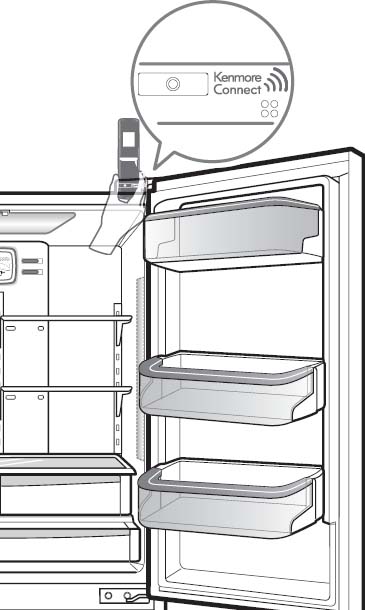

HOLD the mouthpiece of your phone in front of the speaker that is located on the right hinge of the refrigerator door, when instructed to do so by the call center. Hold the phone no more than one inch from (but not touching) the speaker.

PUSH and hold the Freezer Temp button for three seconds while continuing to hold your phone to the speaker.

LISTEN for three beeps. After you hear the three beeps, release the Freezer Temp button. Keep the phone in place until the tone transmission has finished. This takes about 15 seconds, and the display will count down the time. Once the countdown is over and the tones have stopped, resume your conversation with the specialist, who will then be able to assist you in using the information transmitted for analysis.
NOTE:
For best results, do not move the phone while the tones are being transmitted.
If the call center agent is not able to get an accurate recording of the data, you may be asked to try again.
WARRANTY
REFRIGERATOR WARRANTY

Kenmore Elite Limited Warranty
When this appliance is installed, operated and maintained according to all supplied instructions, the following warranty coverage applies. To arrange for warranty service, call 1-800-4-MY-HOME® (1-800-469-4663).
For one year from the date of purchase, free repair will be provided if any non-consumable part of this appliance fails due to defective materials or workmanship. This coverage applies for only 90 days from the purchase date if this product is ever used for other than private household purposes.
For five years from the date of purchase, a defective sealed refrigerant system will be repaired free of charge. This coverage applies for only one year from the date of purchase if this appliance is ever used for other than private household purposes.
For ten years from the date of purchase, a defective compressor will be repaired free of charge. This coverage applies for only two years from the date of purchase if this appliance is ever used for other than private household purposes.
This warranty covers only defects in material and workmanship, and will NOT pay for:
Consumable parts that can wear out from normal use, including but not limited to filters, belts, light bulbs, and bags.
A service technician to instruct the user in correct product installation, operation or maintenance.
A service technician to clean or maintain this product.
Damage to or failure of this product if it is not installed, operated or maintained according to the all instructions supplied with the product.
Damage to or failure of this product resulting from accident, abuse, misuse or use for other than its intended purpose.
Damage to or failure of this product caused by the use of detergents, cleaners, chemicals or utensils other than those recommended in all instructions supplied with the product.
Damage to or failure of parts or systems resulting from unauthorized modifications made to this product.
Disclaimer of implied warranties; limitation of remedies
Customer’s sole and exclusive remedy under this limited warranty shall be product repair as provided herein. Implied warranties, including warranties of merchantability or fitness for a particular purpose, are limited to one year or the shortest period allowed by law. Sears shall not be liable for incidental or consequential damages. Some states and provinces do not allow the exclusion or limitation of incidental or consequential damages, or limitation on the duration of implied warranties of merchantability or fitness, so these exclusions or limitations may not apply to you.
This warranty applies only while this appliance is used in the United States or Canada.
This warranty gives you specific legal rights, and you may also have other rights which vary from state to state.
Sears Brands Management Corporation, Hoffman Estates, IL 60179
Sears Canada Inc., Toronto, Ontario, Canada M5B 2C3
GARANTÍA
GARANTÍA DEL REFRIGERADOR

Garantía limitada de Kenmore Elite
La siguiente cobertura de garantía será aplicable si este electrodoméstico se instala, opera y mantiene de acuerdo con todas las instrucciones suministradas. Para coordinar el servicio por garantía, llame al 1-800-4-MY-HOME® (1-800-469-4663).
Se suministrará reparación gratuita durante un año a partir de la fecha de compra si alguna pieza no consumible de este electrodoméstico fallara debido a defectos en los materiales o la fabricación. Esta cobertura tendrá vigencia solamente de 90 días a partir de la fecha de compra si este producto se ha utilizado para otros fines que no sean de uso doméstico particular.
Se repararán de forma gratuita, durante un plazo de cinco años a partir de la fecha de compra, los sistemas de refrigeración sellados que se detecten como defectuosos. Esta cobertura tendrá vigencia solamente de un año a partir de la fecha de compra si este electrodoméstico se ha utilizado para otros fines que no sean de uso doméstico particular.
Se repararán de forma gratuita durante un plazo de diez años a partir de la fecha de compra los compresores que se detecten como defectuosos. Esta cobertura tendrá vigencia solamente de dos años a partir de la fecha de compra si este electrodoméstico se ha utilizado para otros fines que no sean de uso doméstico particular.
Esta garantía cubre sólo defectos de materiales y fabricación y NO pagará:
Elementos consumibles que puedan gastarse debido al uso normal, incluyendo entre otros, los filtros, correas, bombillas y bolsas de la unidad.
Un técnico de servicio para mostrar al usuario la instalación, funcionamiento o mantenimiento correctos del producto.
Un técnico de servicio para realizar labores de limpieza o mantenimiento del producto.
Daños o averías como consecuencia de no seguir todas las instrucciones de instalación, funcionamiento o mantenimiento incluidas con el producto.
Daños o averías en caso de accidente, abuso, uso inadecuado o uso con propósitos distintos a los fines para los que fue diseñado.
Daños o averías en caso de utilizar detergentes, limpiadores, sustancias químicas o utensilios distintos a los recomendados en las instrucciones incluidas con el producto.
Daños o averías en las piezas o sistemas provocados por modificaciones del producto no autorizadas.
Cláusula de exención de responsabilidad o garantías implícitas; limitación de recursos
El único y exclusivo recurso del cliente bajo esta garantía limitada será la reparación del producto como se ha mencionado. Las garantías implícitas, incluyendo garantías de comerciabilidad o idoneidad para un fin concreto, se limitan a un año o el período de tiempo más reducido permitido por la ley. Sears no será responsable de los daños incidentales o derivados. Ciertos estados y provincias no permiten exclusiones o limitaciones de daños incidentales o derivados, o limitaciones en relación a la duración de las garantías implícitas de comerciabilidad o idoneidad, de tal forma que estas limitaciones o excepciones pueden no ser pertinentes para usted.
Esta garantía será aplicable únicamente mientras este electrodoméstico sea utilizado dentro de los Estados Unidos o Canadá.
Esta garantía le otorga unos derechos legales específicos e incluso puede conferirle otros derechos distintos dependiendo del estado en que se encuentre.
Sears Brands Management Corporation, Hoffman Estates, IL 60179
Sears Canada Inc., Toronto, Ontario, Canadá M5B 2C3
Service
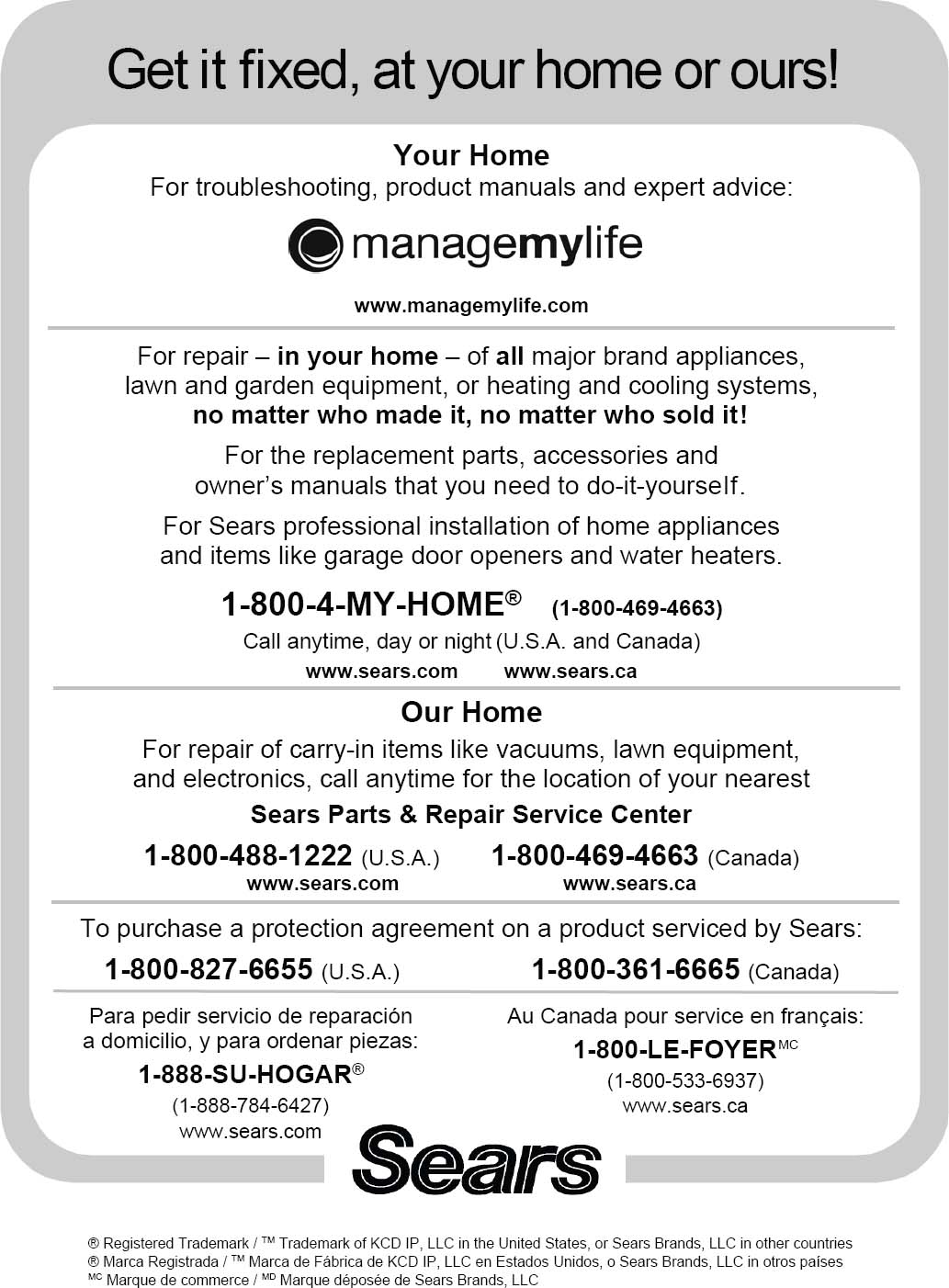
f and Auto. If the light is set to the Auto mo
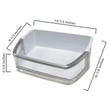
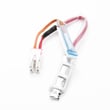
Refrigerator defrost sensor assembly (replaces acm73919201)

Refrigerator dispenser switch (replaces 6600jb3001b, 6600jb3001h)
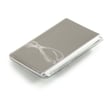
Refrigerator dispenser lever
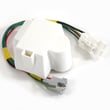
Refrigerator compressor start relay (replaces ebg60663213)

Refrigerator temperature sensor and cover
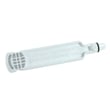
Refrigerator water filter bypass
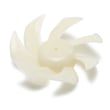
Refrigerator evaporator fan blade
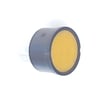
Refrigerator compressor overload protector
